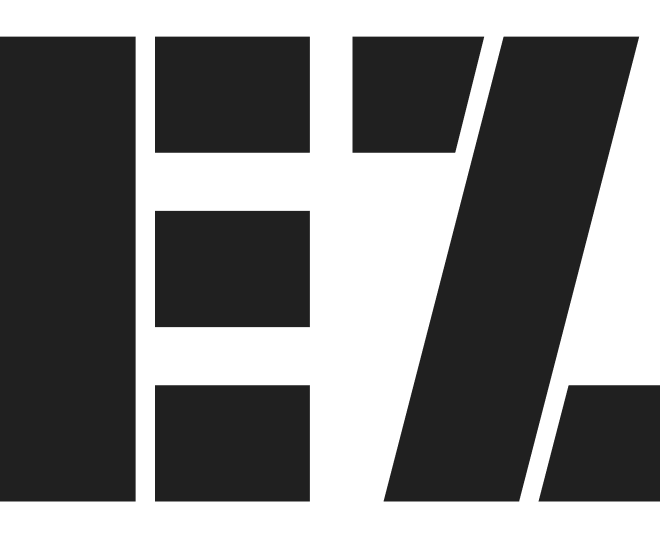Overview
We prototyped a website platform that connects potential solar energy clients from developing nations to solar energy providers to help them make informed choices. This is our way to address the bigger problem of developing nations lacking a good way to get connected to a grid system. More specifically, customers can use the site to bring specifications from clients and consultants and receive comprehensive recommendations for purchasing and installing small-to-mid-scale solar energy systems.
Role
Prototype Lead
Timeline
September 2018 - December 2018
Methods
Background Research, Heuristic Evaluations, Contextual Inquiry, Contextual Analysis, Semi-structured Interviews, Expert Interviews, Paper Prototyping, Storyboarding, Affinity Mapping, Workflow Models, User Task Flow Models
Tools
Google Drive, Wix, Pen & Paper, Wireframe CC
Media
Team
Tho Nguyen, Pablo Ramos, Kavya Ravikanti, Thomas Sobolik, & Emily Zou
Problem
Not Everyone has Electricity
1.3 billion people live in the dark (Pew Research). Rural and developing nations have some of the most potential of using solar energy. However, there is no central way of communication between leaders and solar energy providers. We aim to solve the problem by designing a platform that can bring power to those that need it the most.
1.3 billion people live in the dark (Pew Research). Rural and developing nations have some of the most potential of using solar energy. However, there is no central way of communication between leaders and solar energy providers. We aim to solve the problem by designing a platform that can bring power to those that need it the most.
Research & Insights
We conducted 8 segments of research in order to explore and discover user needs. Our general approach was to go broad first and then narrow down potential directions for design opportunities.
Contextual Inquiries & Semi-structured Interviews
Our project serves a specialized set of individuals who could not be so readily found and met with as the everyday American consumers we were targeting with our initial idea. Thus, a tremendous amount of work went into our initial push to make contact with people possessing the knowledge about and experience within the solar energy development field we desired. We quickly realized it would not be feasible for us to interview a large number of users of the work domain's existing tools, and that our preliminary work was better spent interviewing experts to better understand the requirements of the service in a holistic manner.
We sat for interviews from three sources: Taylor Brown, the CTO at SunTribe Solar (a prominent solar development startup in Charlottesville), Dr. Kyusang Lee, a researcher at U.Va whose "research interests highlight the use of organic and inorganic materials in optoelectronic devices, with a particular emphasis on applications for solar energy conversion and imaging," and Chris, the branch manager at Charlottesville's Altenergy location.
We learned about the process of how solar organizations work to install solar panels for clients from the interview with Taylor Brown. He also provided us with some data and tools that his companies use with real clients so that we can build a price estimator.
In our interview with Kyusang Lee, we learned about the components of a solar panel. He showed us his research in optimizing the amount of energy produced by solar panels by testing different designs and materials for the panels. The most valuable insights were about the market prices for solar panel components and the ease of installation of solar panel.
From Alt Energy, we learned about the roles of solar installation managers. Most of the time-consuming work for installation comes from the wiring, which the person highly recommends letting a professional do it. Chris's insights allowed us to narrow the scope of our project so that we encourage the communications between the NGOs and the cities that need the power instead of encouraging people to install solar panel parts by themselves.
Lastly, we learned how organizations for social good function from Professor Brown. There seems to not be a a one-stop place for all the organizations and companies involved with installing solar panels for developing countries. In addition, there is a great demand and available land for solar energy in the developing countries.

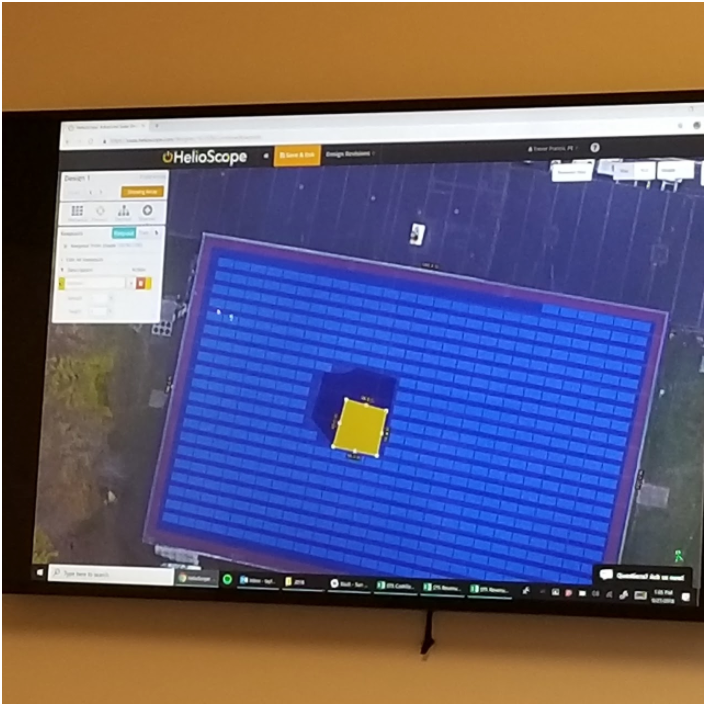
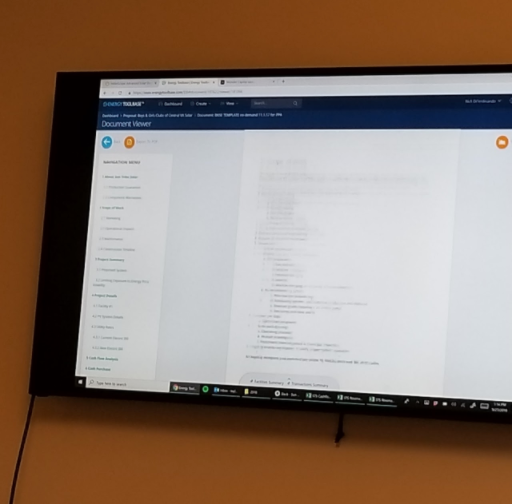
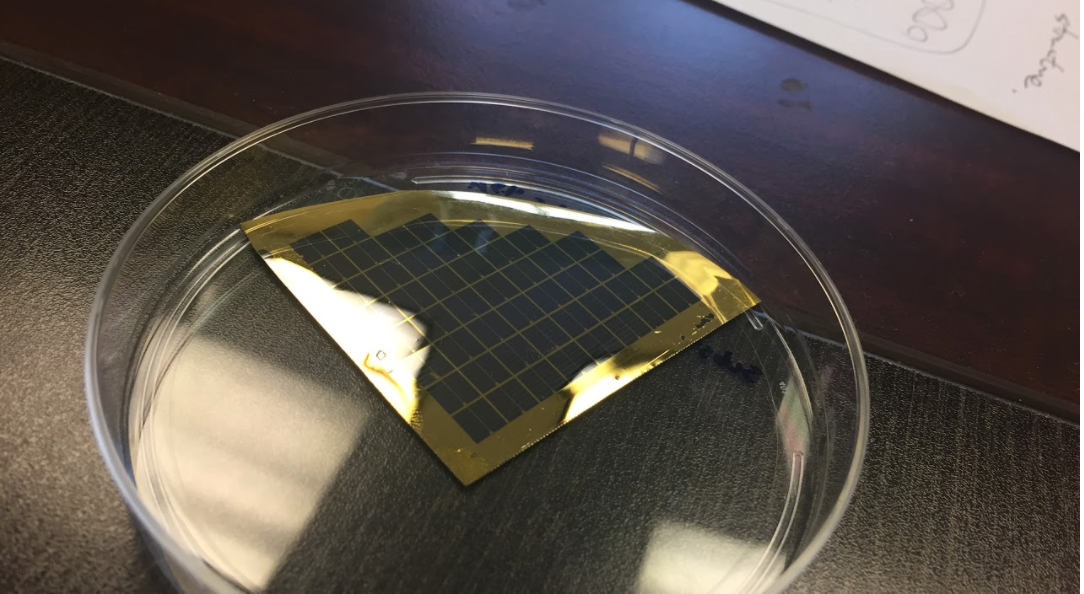
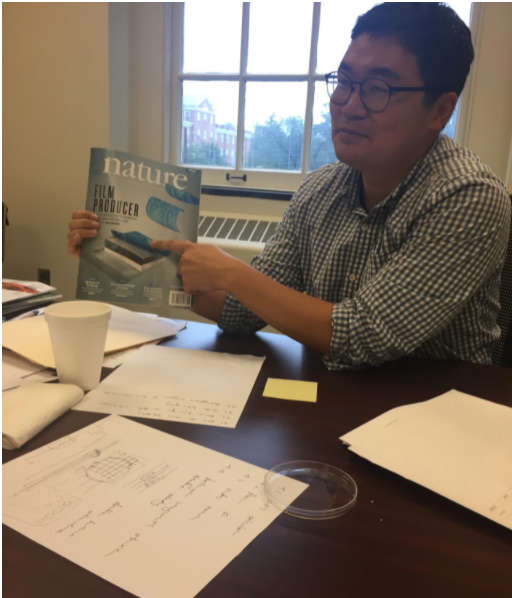
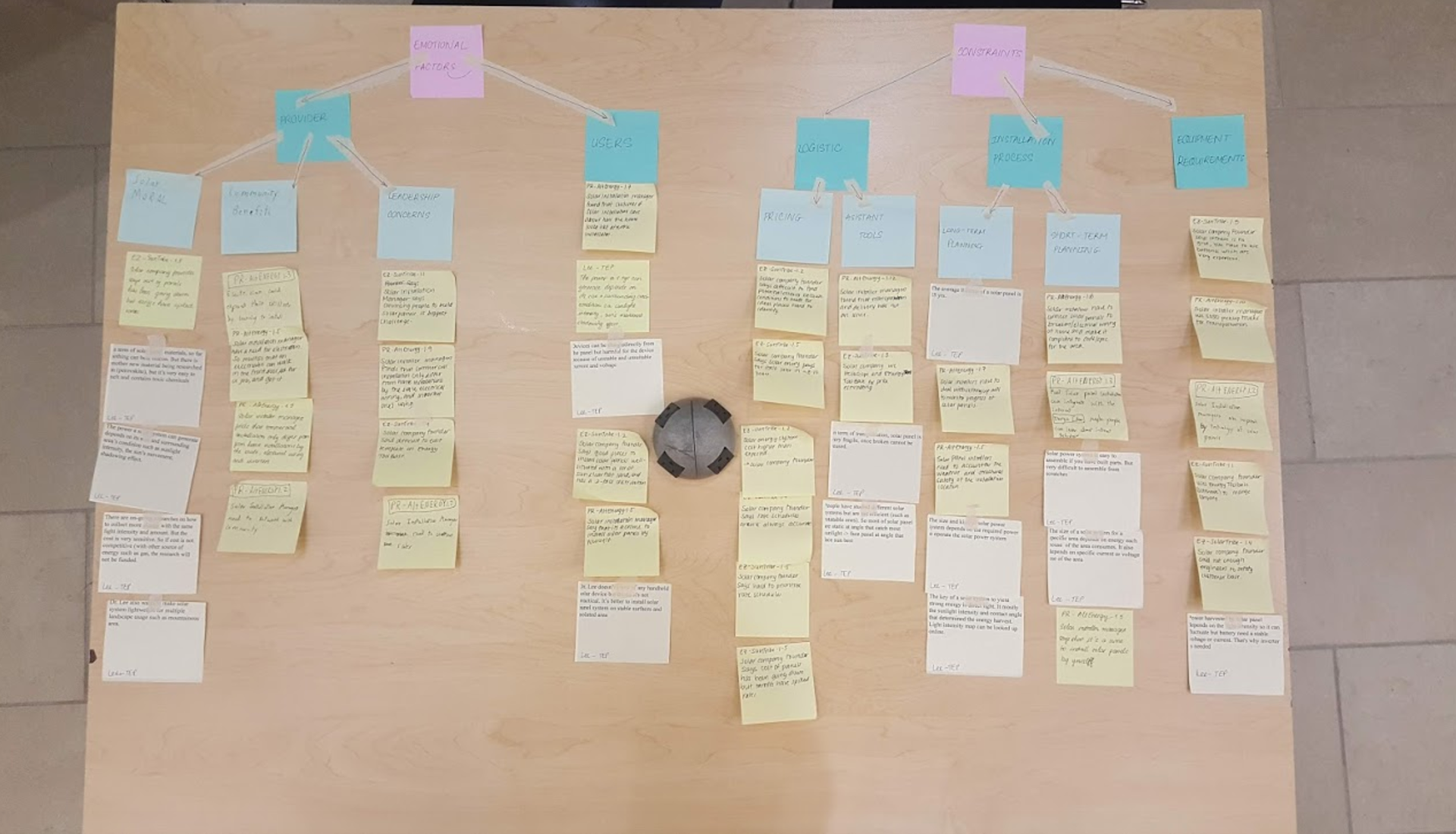
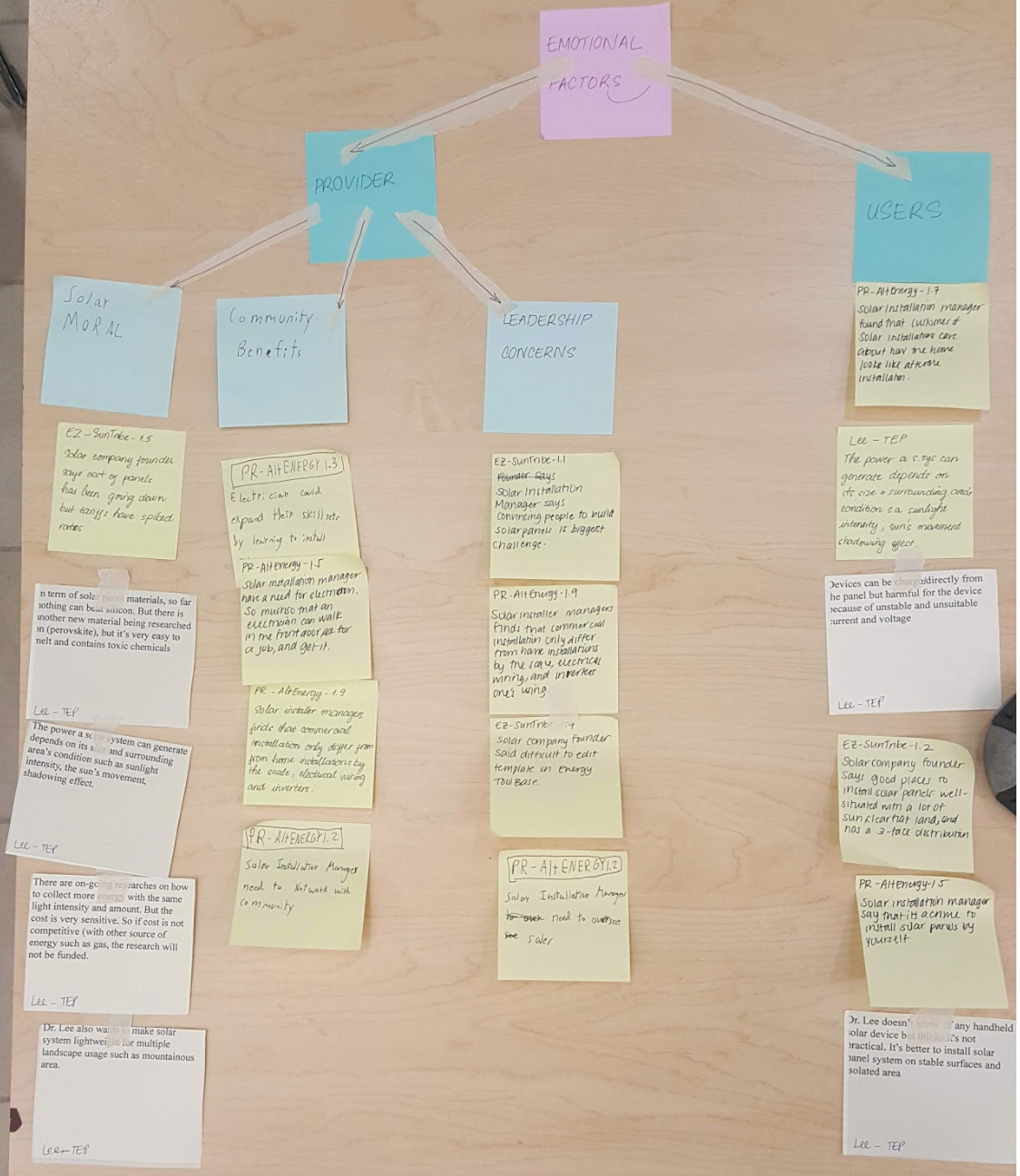

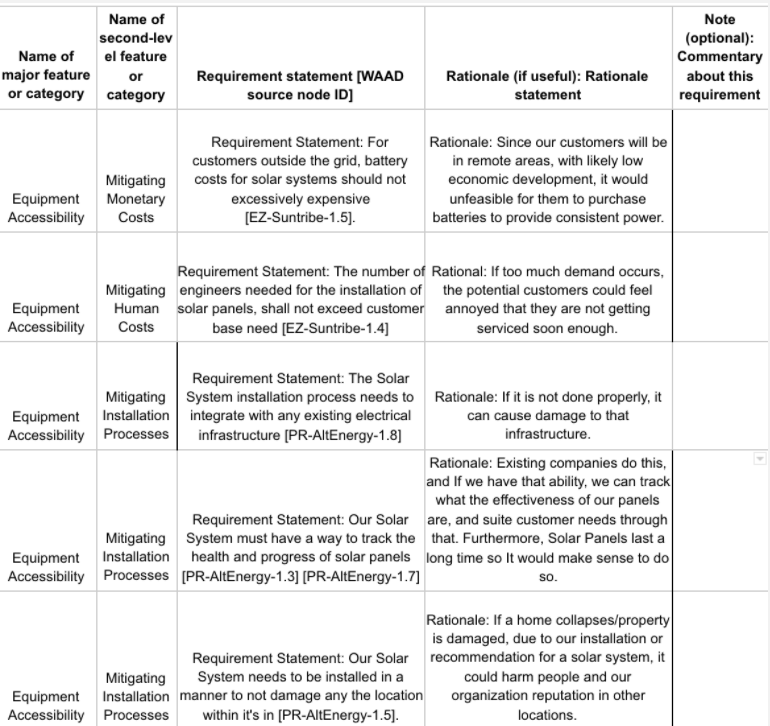
Personas
One of the biggest challenges our team faces is that other than our client, we do not have much insight into what people in the rural African communities will actually need. Many of our interviews were solar panel companies aimed at solar development in American communities. We tailored the information we collected in contextual analysis and inquiry, specifically in the requirements to the best of our abilities while balancing what we think our primary persona, Abioye, would actually need. Multiple conversations and check-ins with our client during this process also helped with making sure that what we were building could be actually used.
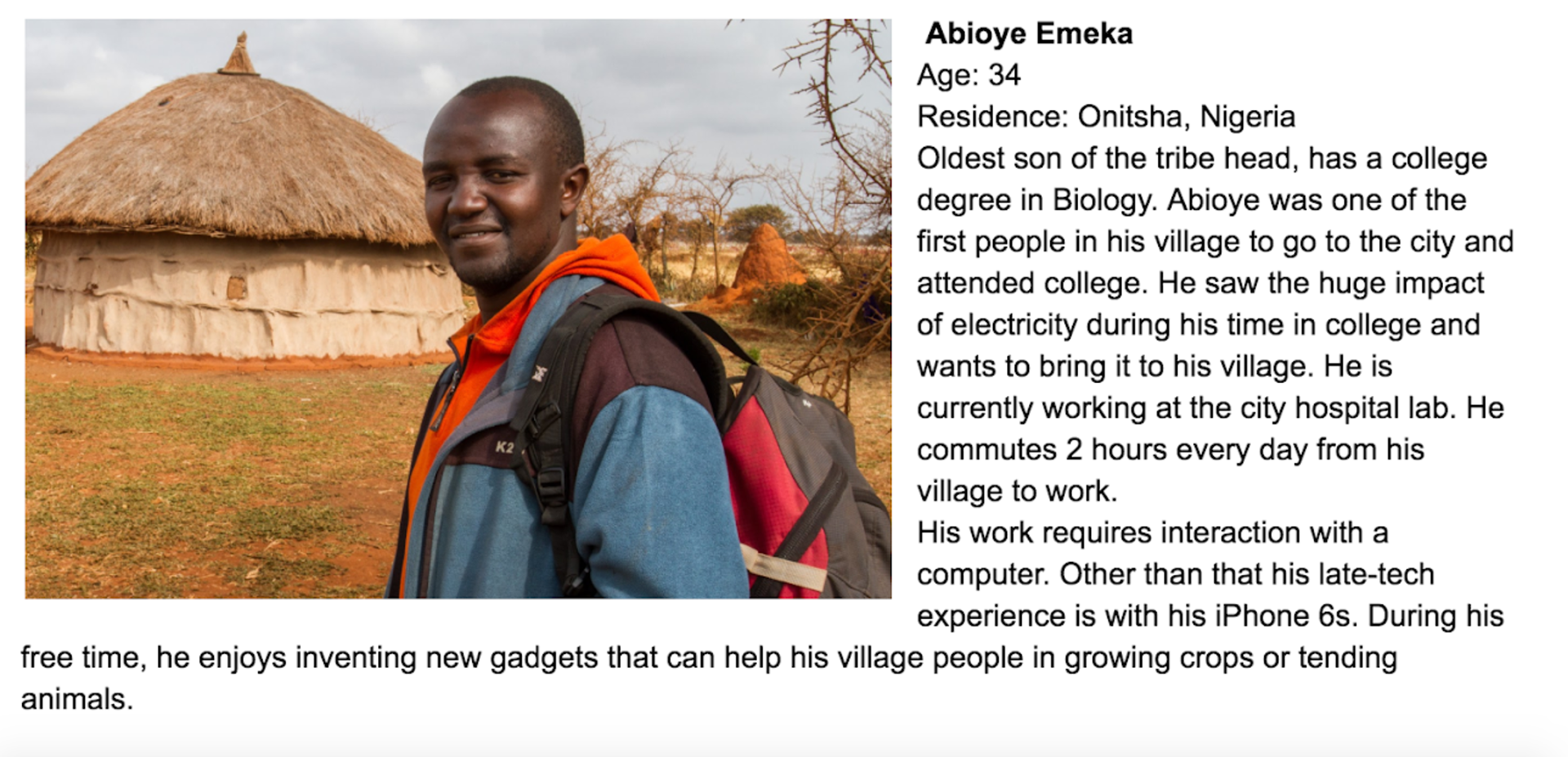
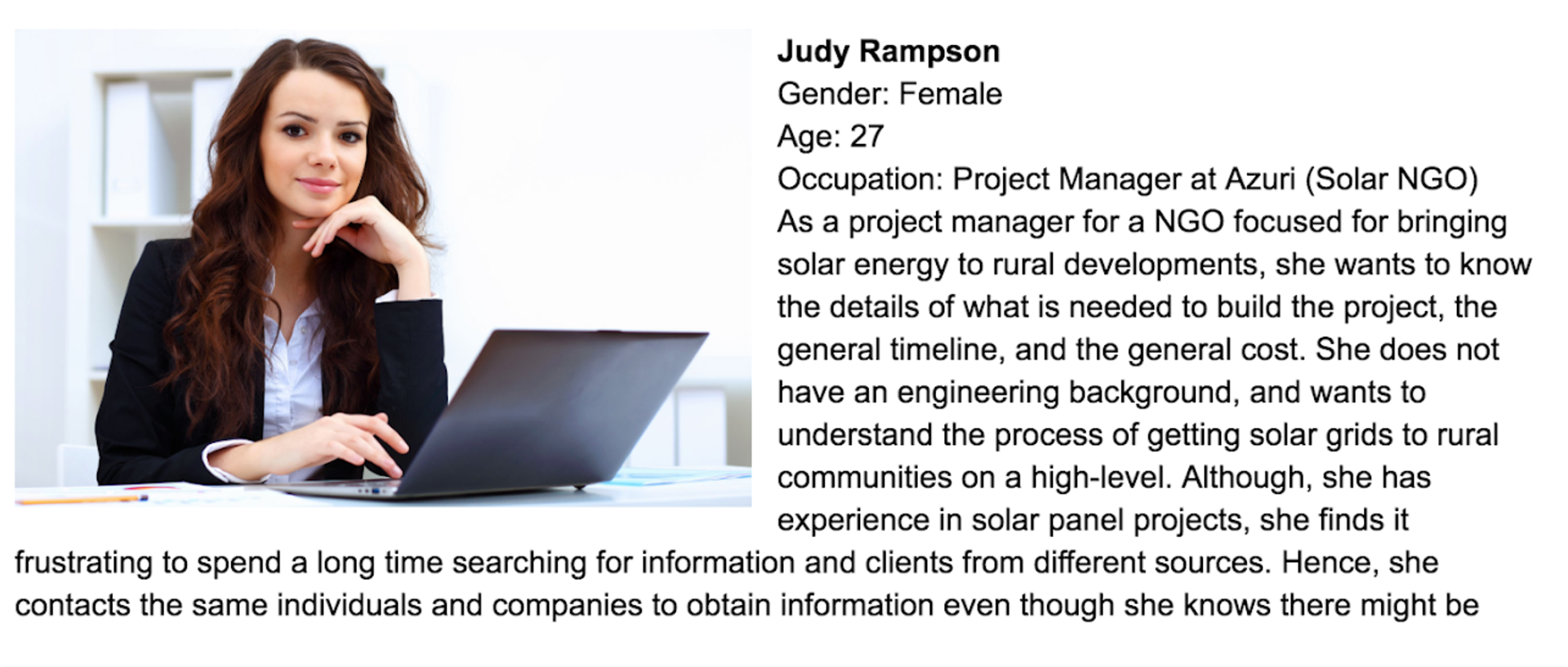
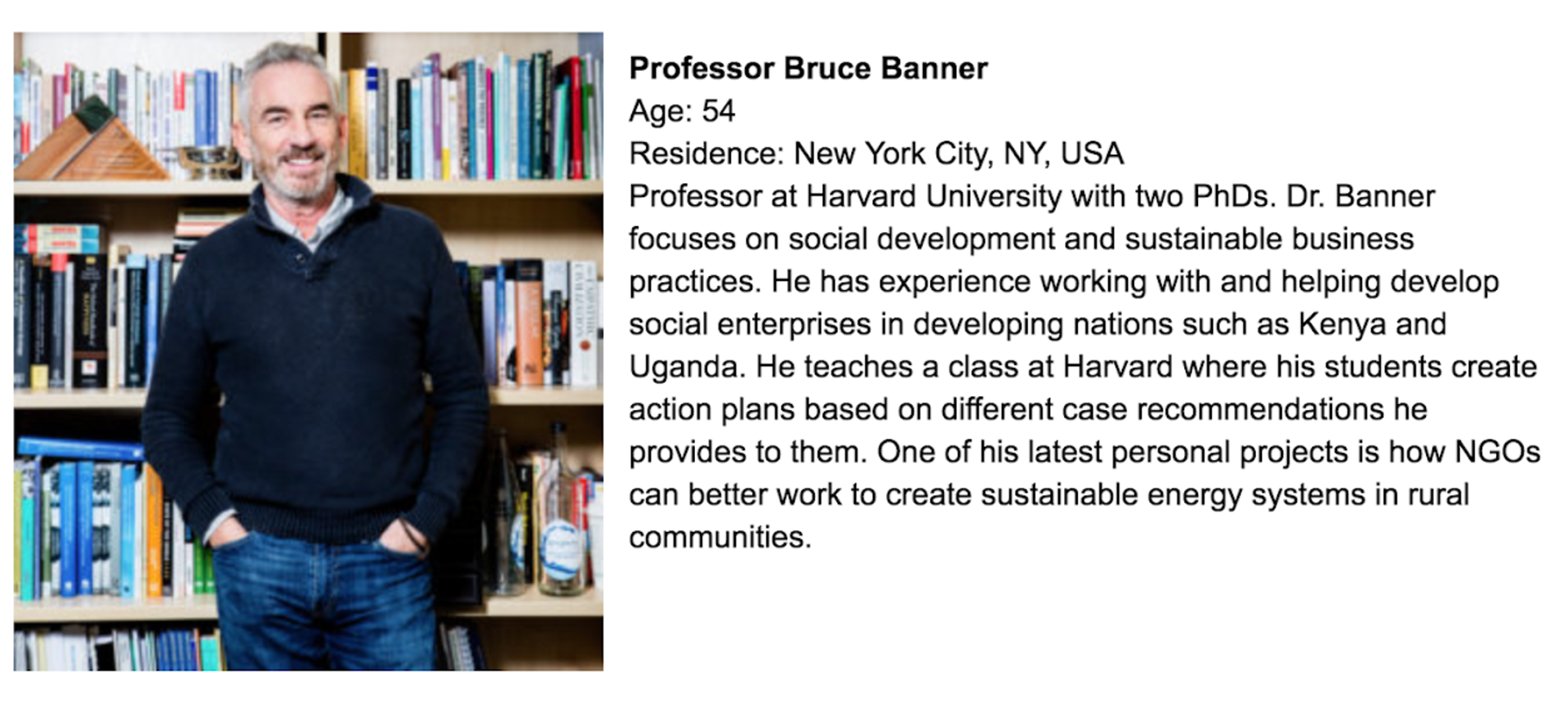
Sketching & Information Architecture
After developing personas, we made some sketches & basic requirement lists based off our research. We tested Our biggest realization was that we did not have to solve every solar energy problem. In fact, the largest potential for design was simply to connect users to NGOs and other providers. Here is our mental model:
1. Product should include a price estimator (guiding metaphor being a flight finder service like Skyscanner) which maps users' system needs to a set of relevant products.
2. Product should allow NGO representatives to sign up their organization, allowing storage of specs and information about the NGO to be hosted by the site.
3. Product should include a 'marketplace' to allow users to trade and sell one another system components
4. After feedback from our client after the first iteration of the wireframe, we decided to remove this functionality for the same reason as above.
5. Product should include forums to facilitate user-to-user interaction and the communal spread of information
2. Product should allow NGO representatives to sign up their organization, allowing storage of specs and information about the NGO to be hosted by the site.
3. Product should include a 'marketplace' to allow users to trade and sell one another system components
4. After feedback from our client after the first iteration of the wireframe, we decided to remove this functionality for the same reason as above.
5. Product should include forums to facilitate user-to-user interaction and the communal spread of information
These specs would move on to inform our wireframes, and were based mainly on the primary persona scenario.
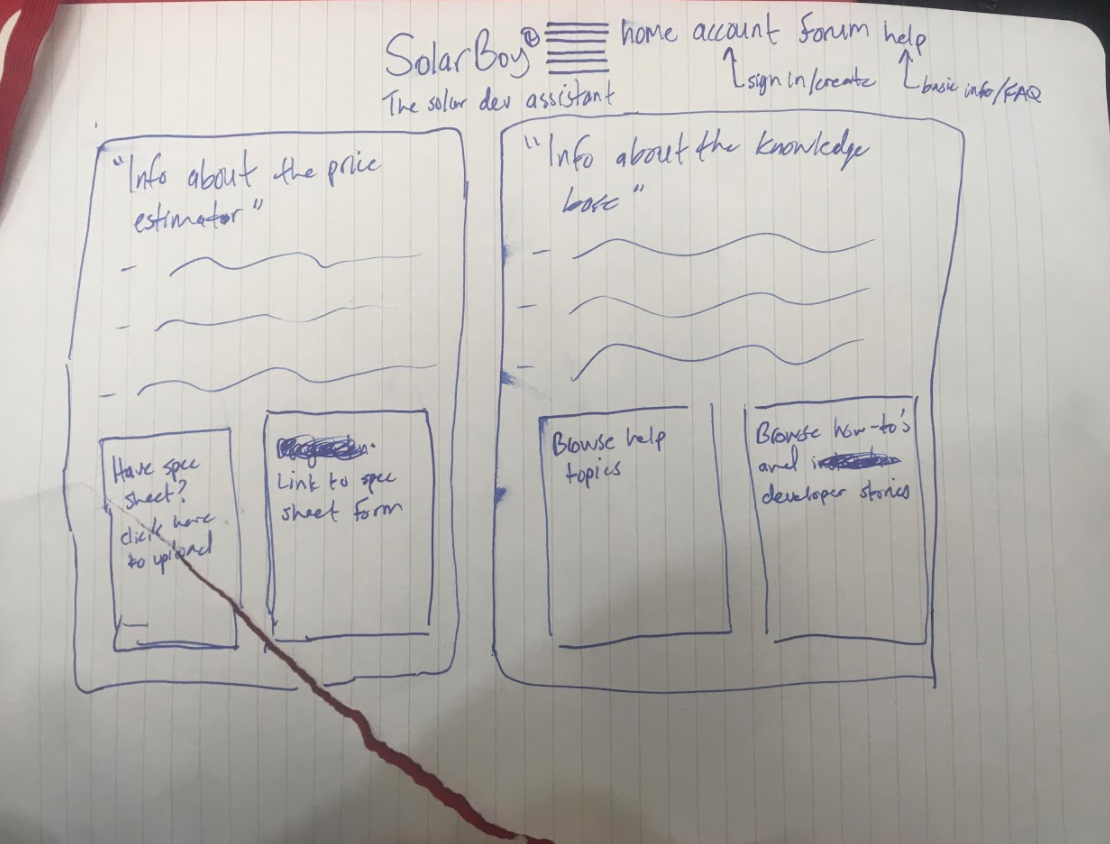
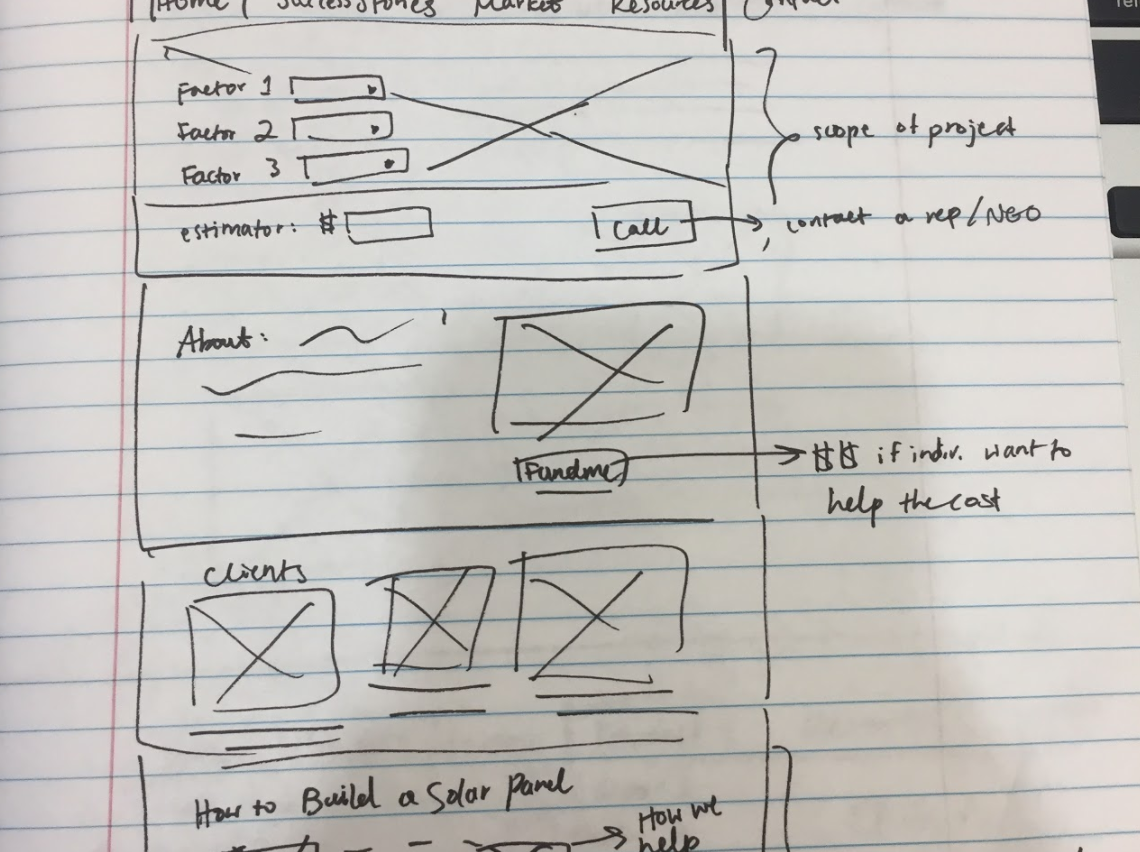
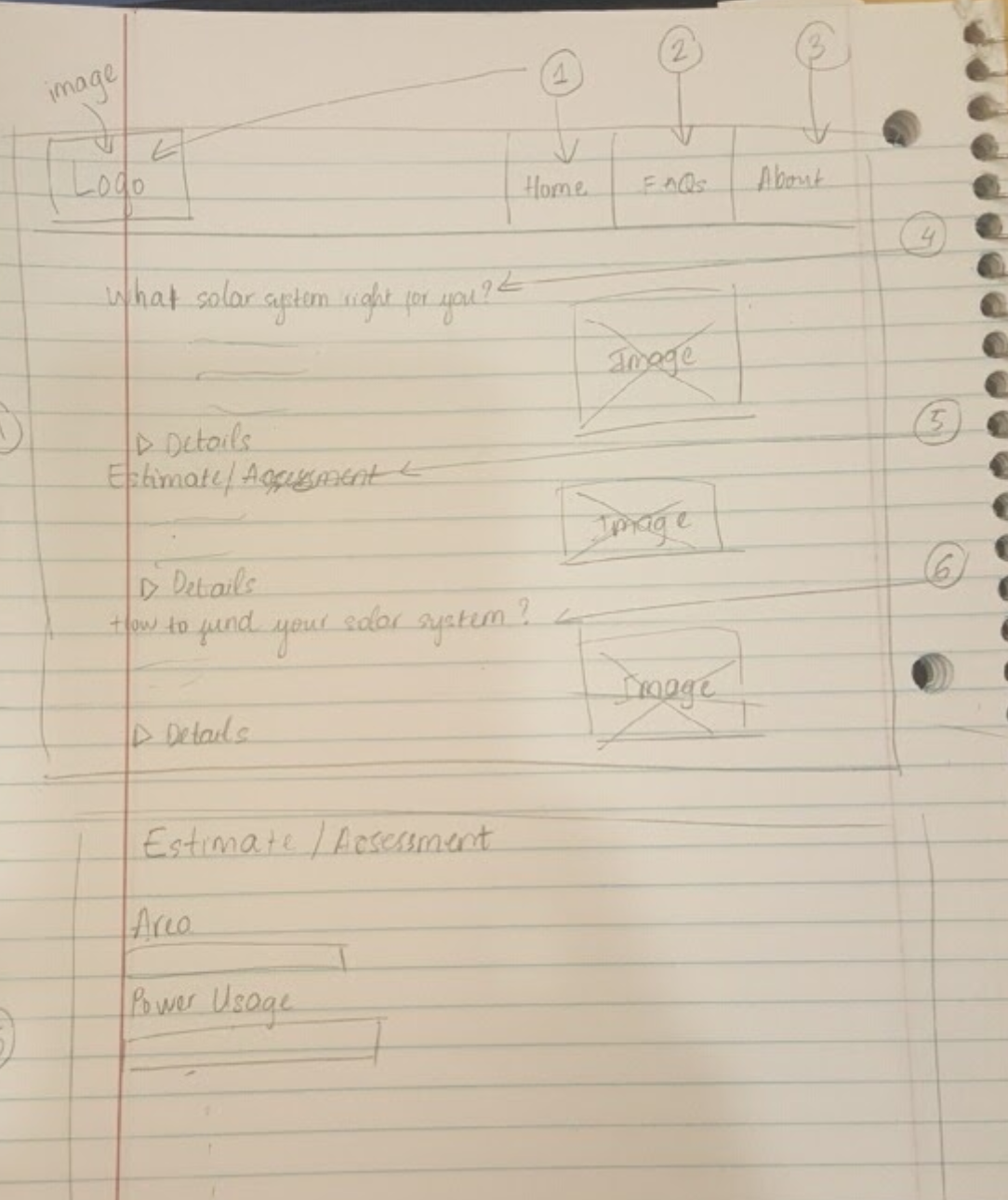
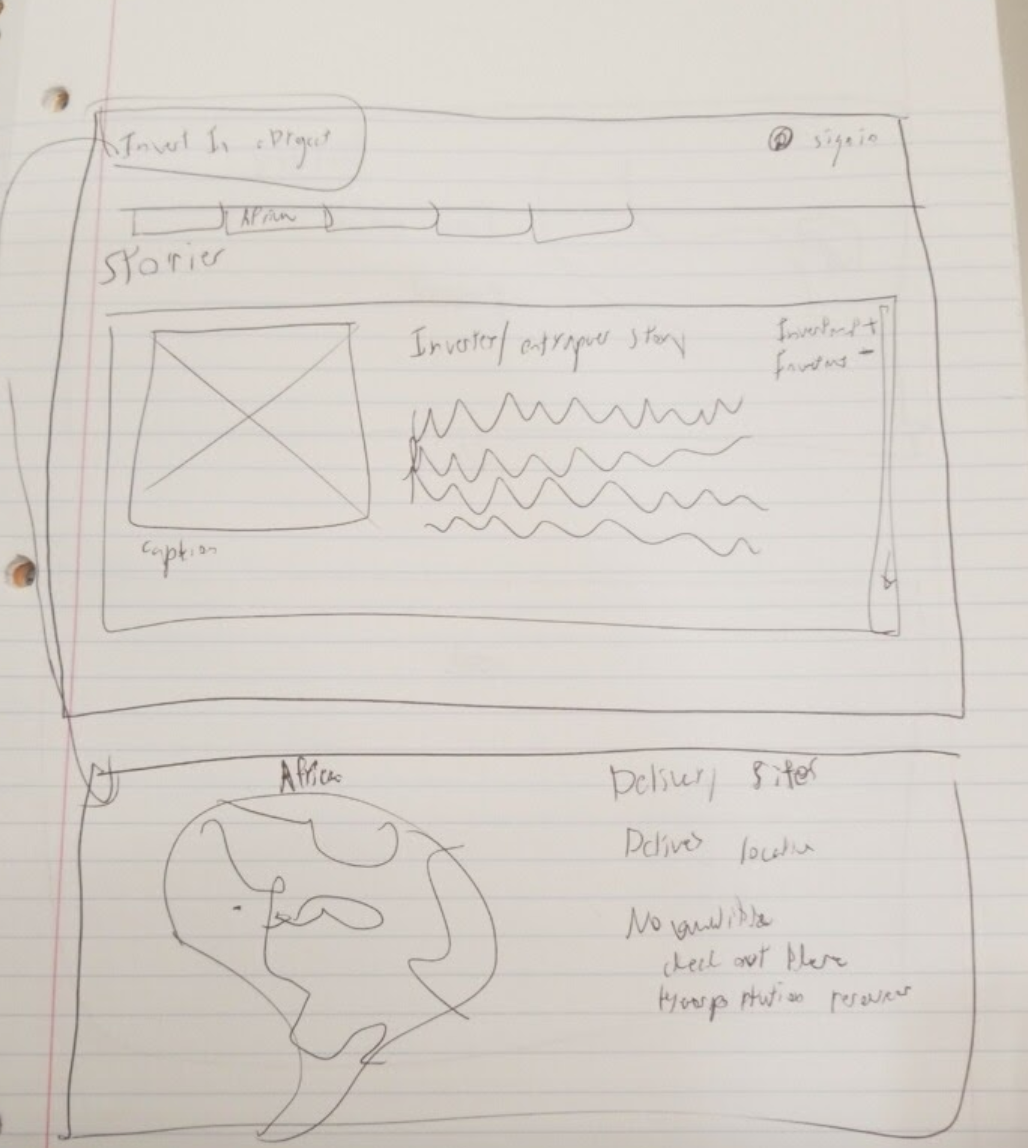
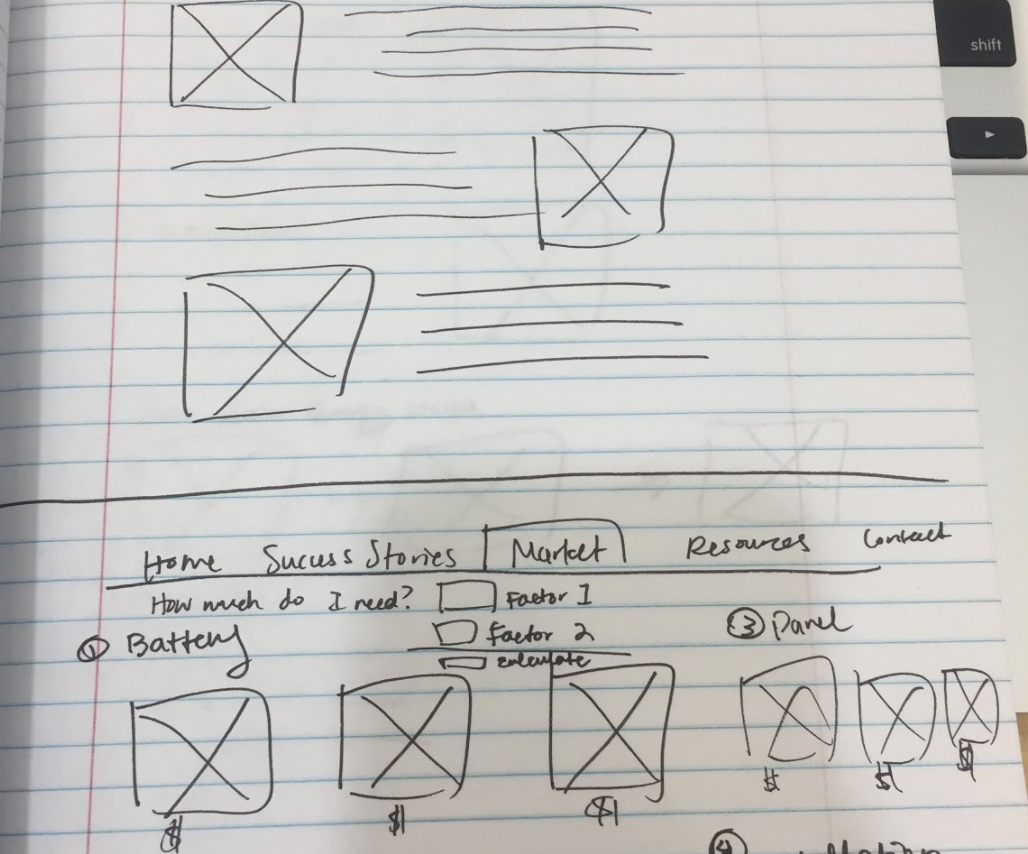
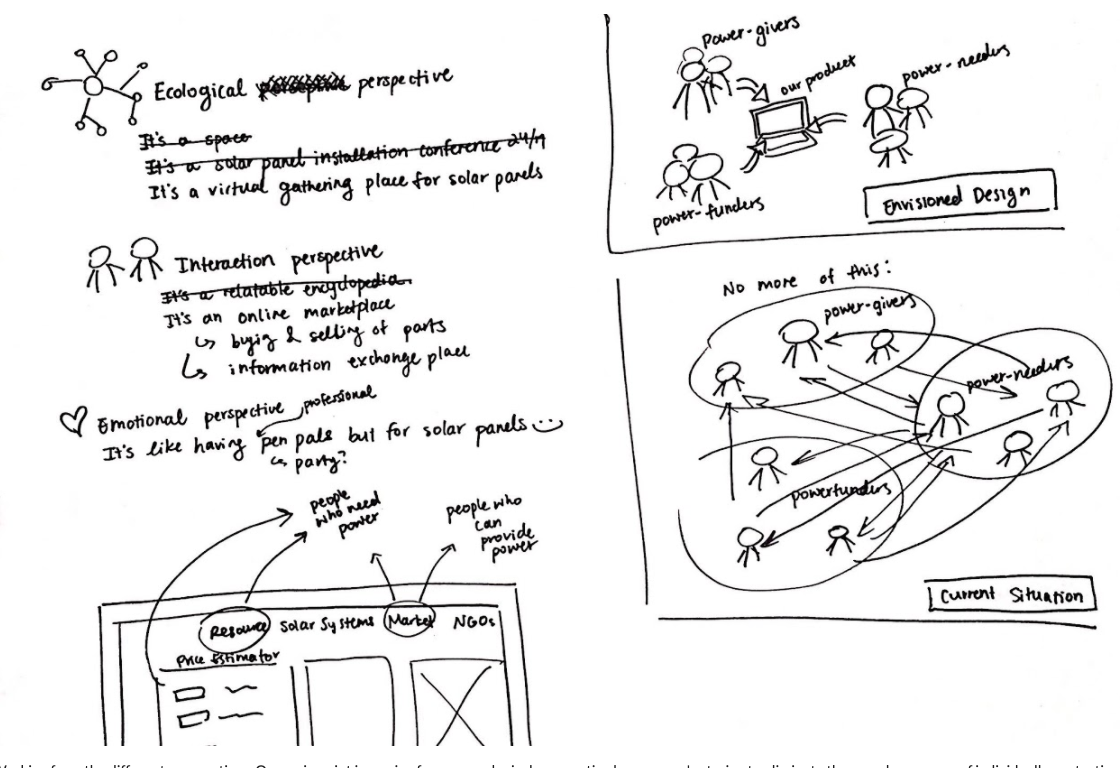
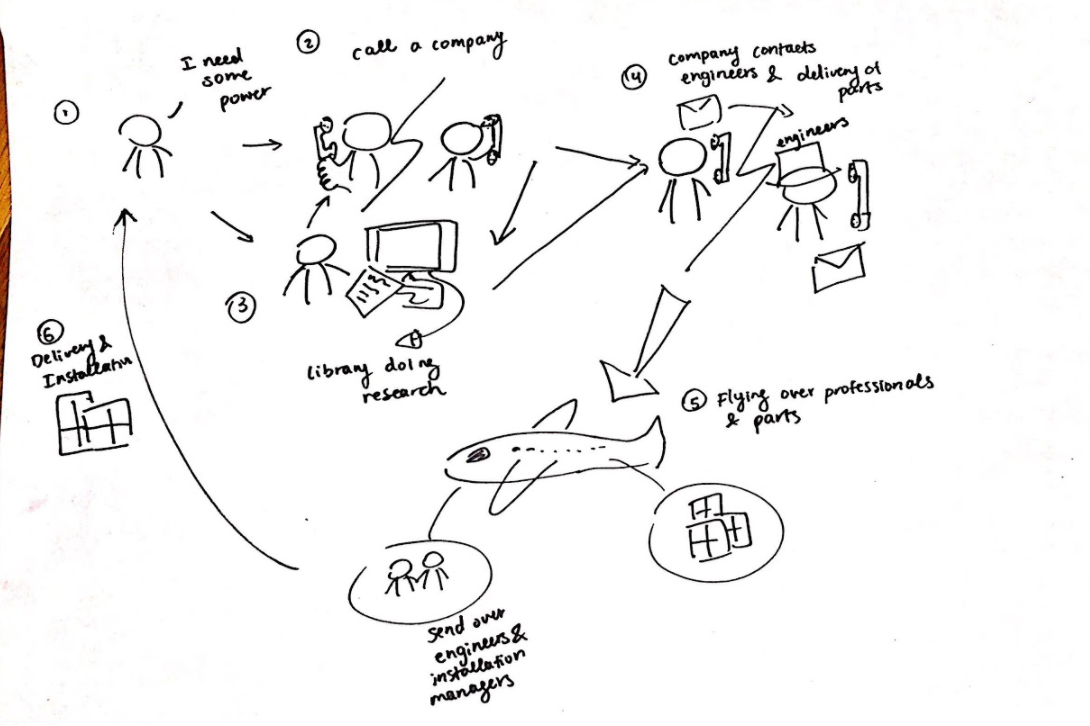

Paper Prototyping & Benchmark Testing
After our initial iterations, we tested the designs, which we printed out after designing in wireframes.cc. We asked usability questions and benchmarked their times to perform 3 tasks to 5 classmates with leadership backgrounds. The classmates are not perfect proxies for our actual users. However, the selected students have similar backgrounds to real users in that they serve as community leaders in organizations, which is similar to the actual community leaders, who are trying to contact NGOs for more information. In a better situation, in which there were more time and resources such as plane tickets paid to go to developing nations for usability testing, we would have asked our actual users questions.
From this experience, we realized some flaws in our designs when trying to map our own mental models onto the users. For example, we realized that the people who need the power often do not have access to desktops. They would need information that could be displayed on phones, which they are more likely to have. In addition, we realized that we could narrow down a lot of concepts. Instead of researching and providing set solar panel system installations for people, we should concentrate on our flagship product which is the price estimator.
During our next designing and storyboarding phase, we met back up with our client, Professor Brown, who gave us some more insight on how our actual users might think. He listed out more things that users might want to know or do not know such as how big the spacing is, being careful on using imperial measurement systems versus metric systems, and basing costs on how many households needs to be powered up. With these factors in mind, we went back to storyboarding and wireframing.
Demo
Demo
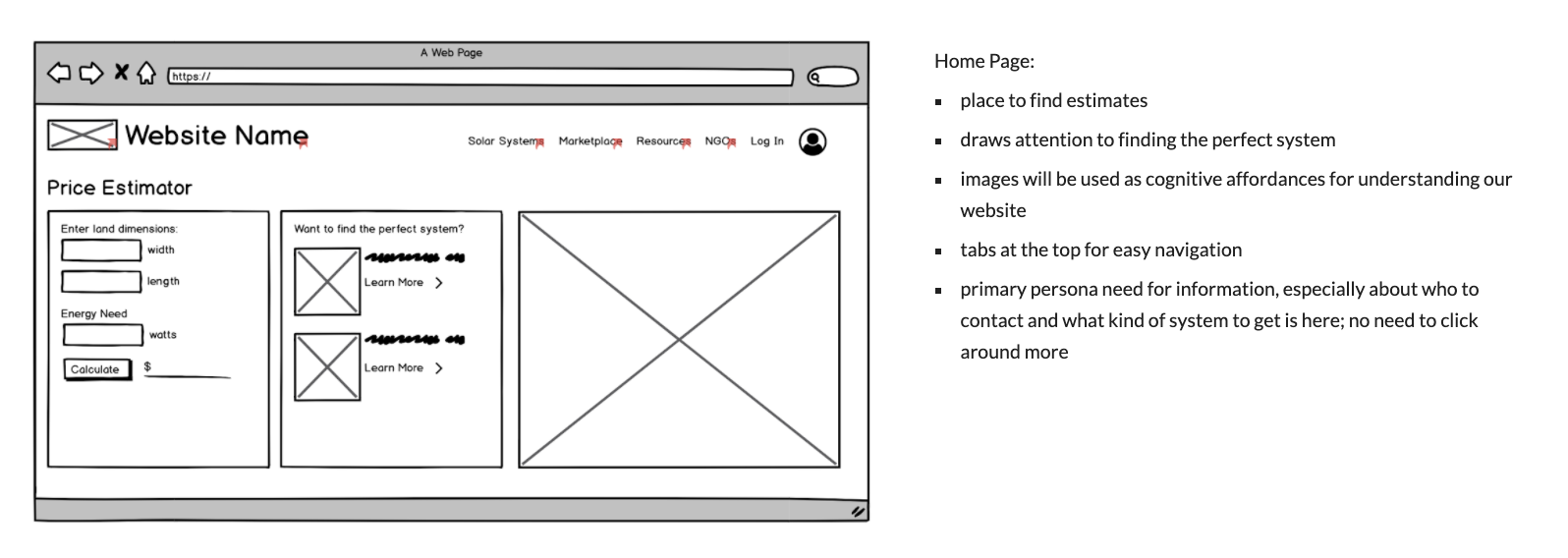
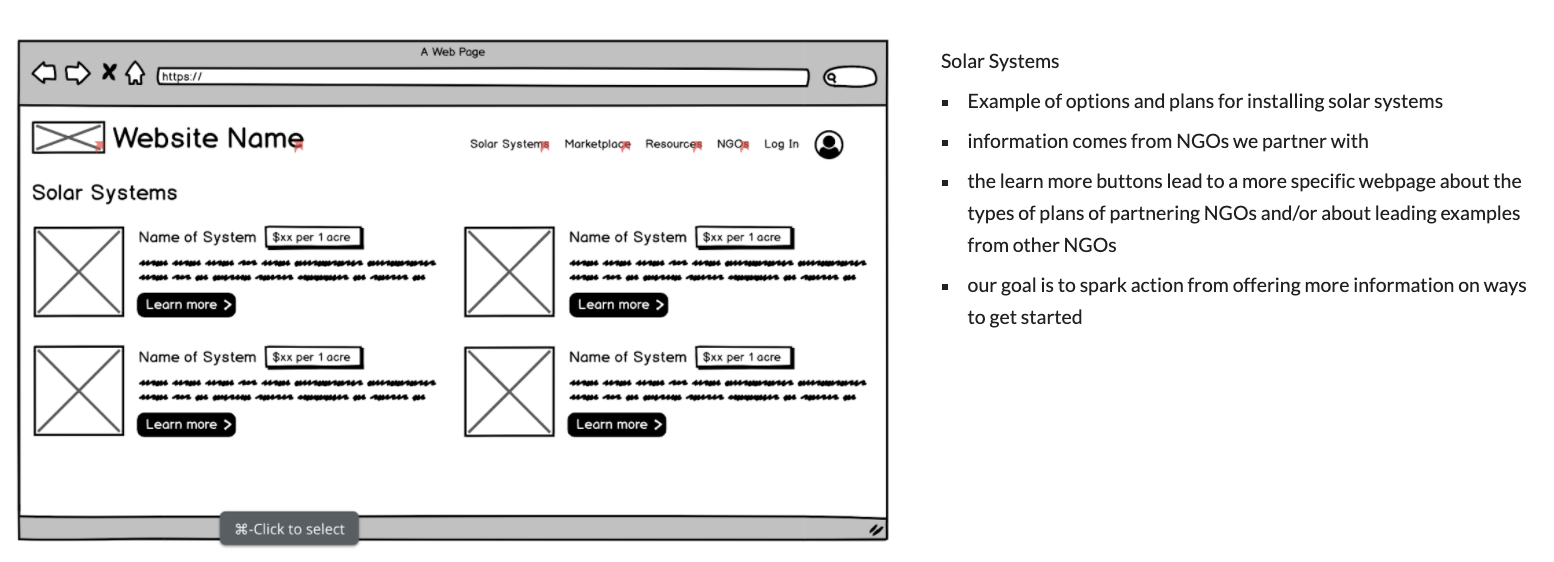
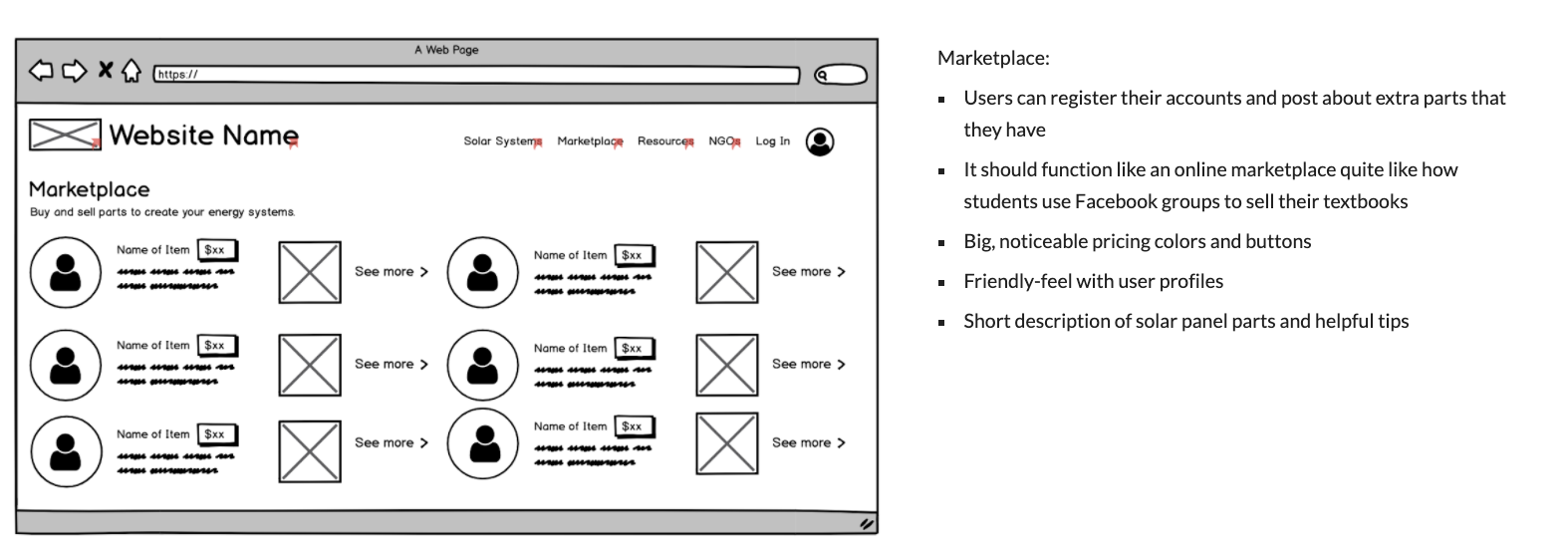
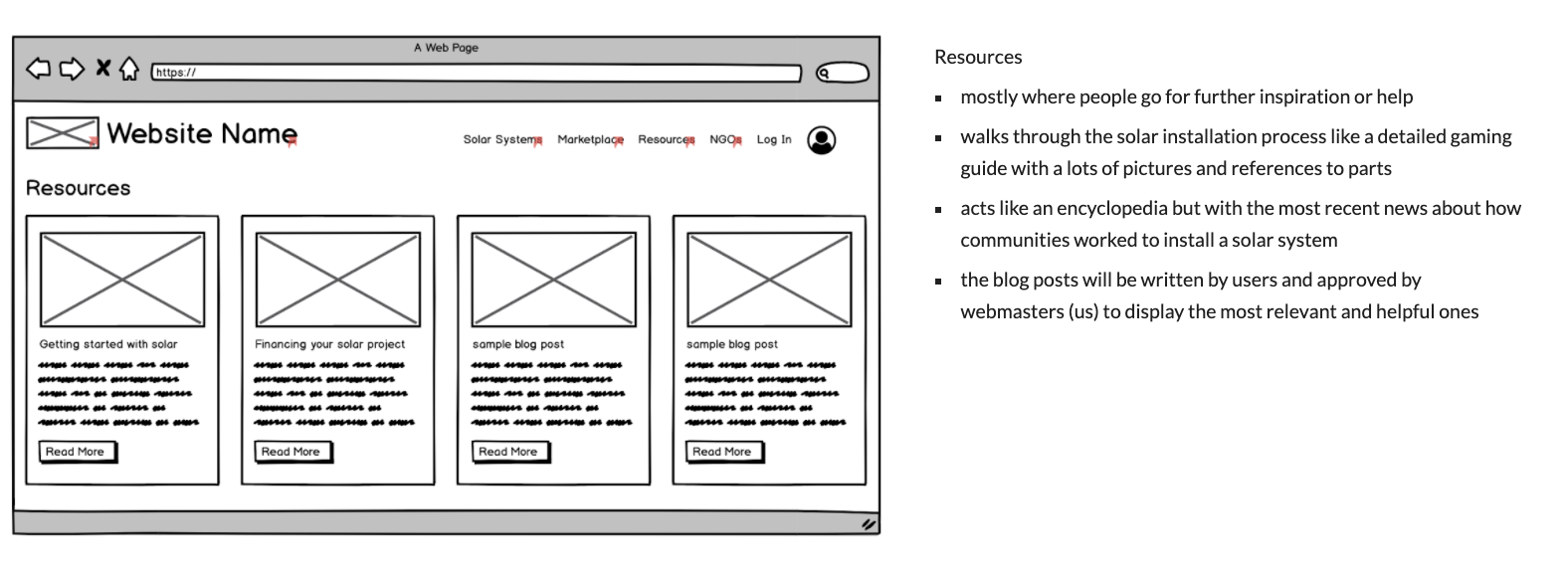
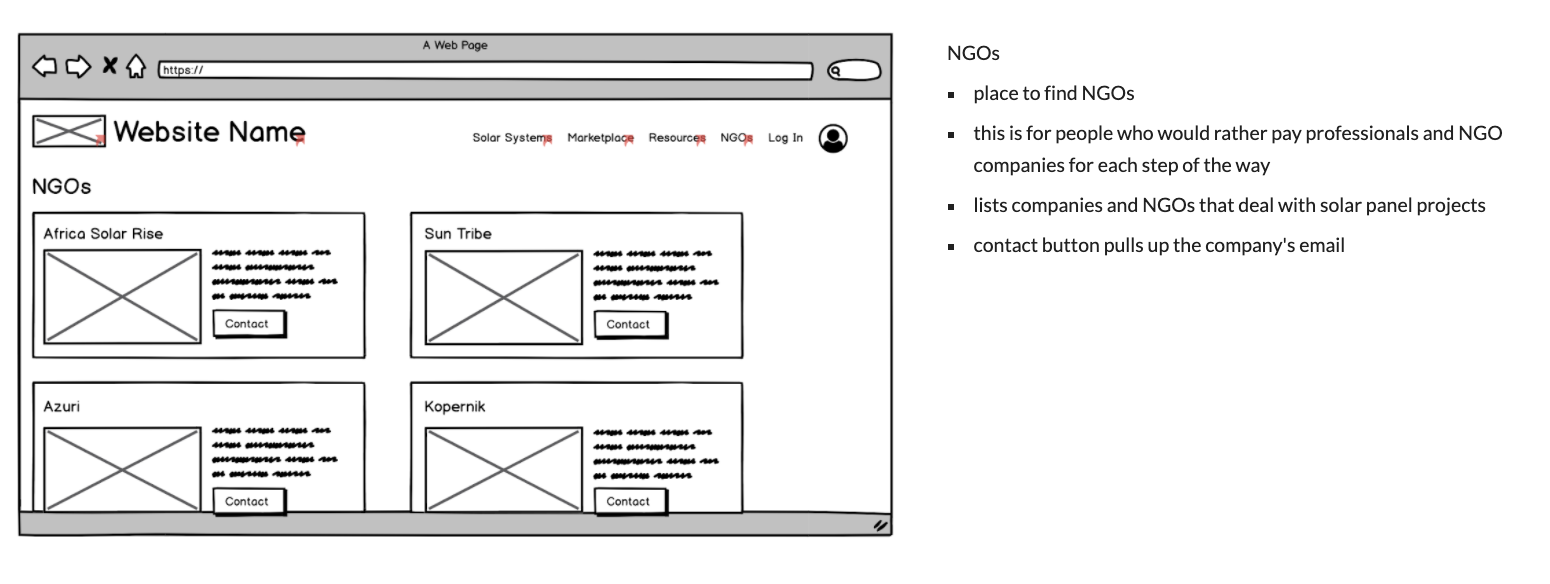
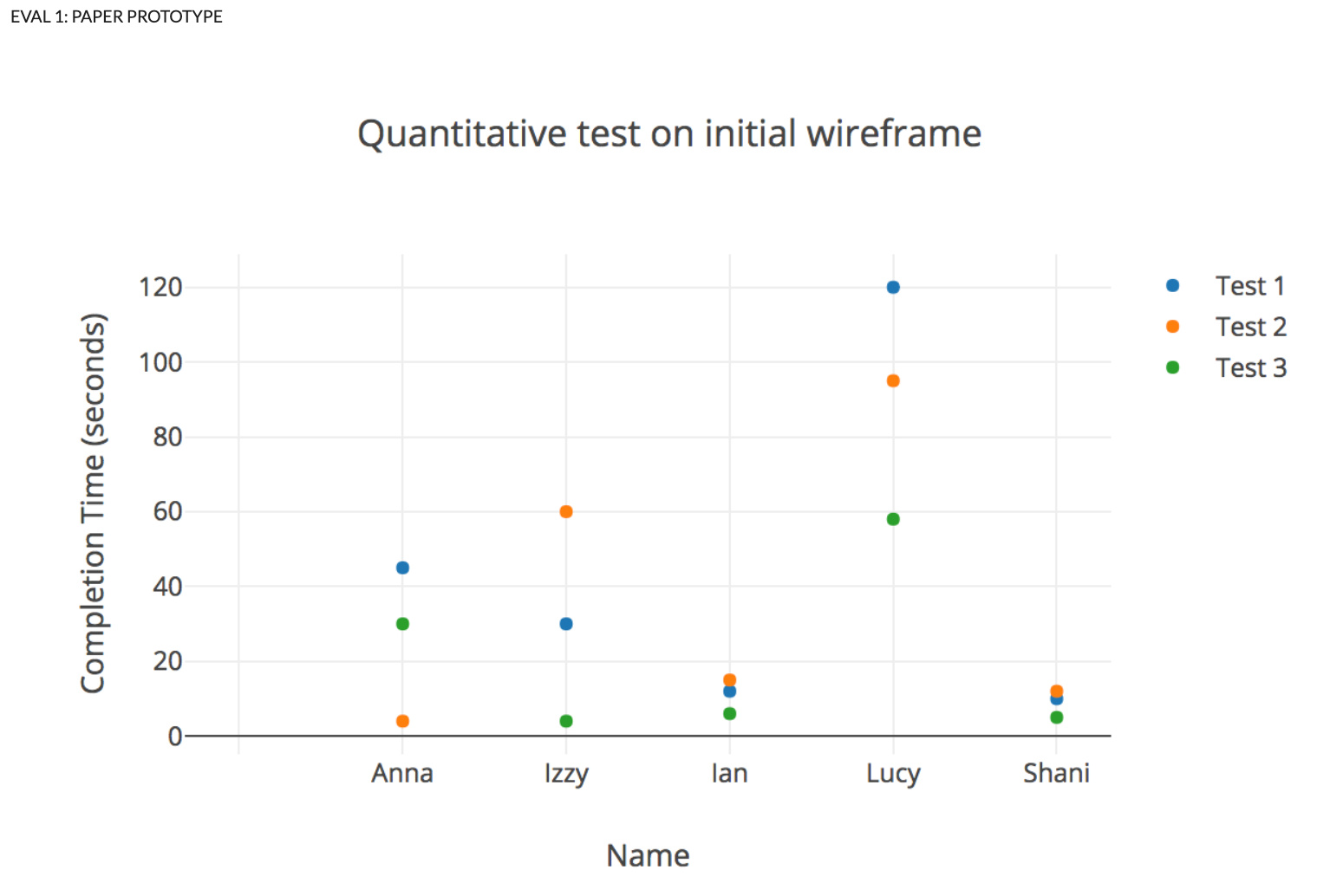
Storyboarding
After the initial test. We found storyboarding helpful for soliciting requirements for designs. We used this method to help put us in the shoes of the user and think about the questions they might ask when coming to our website and the purpose behind them coming to our site

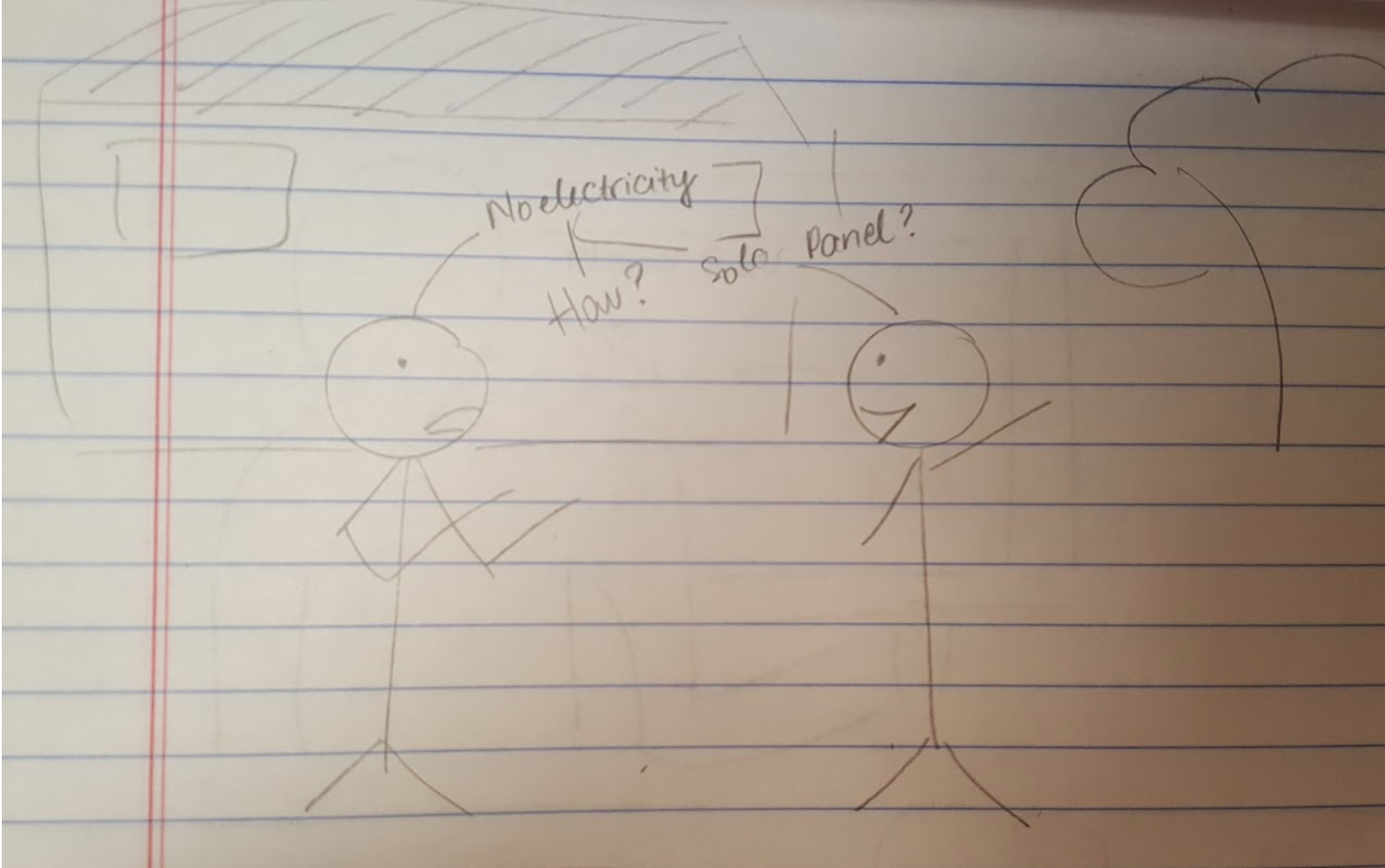
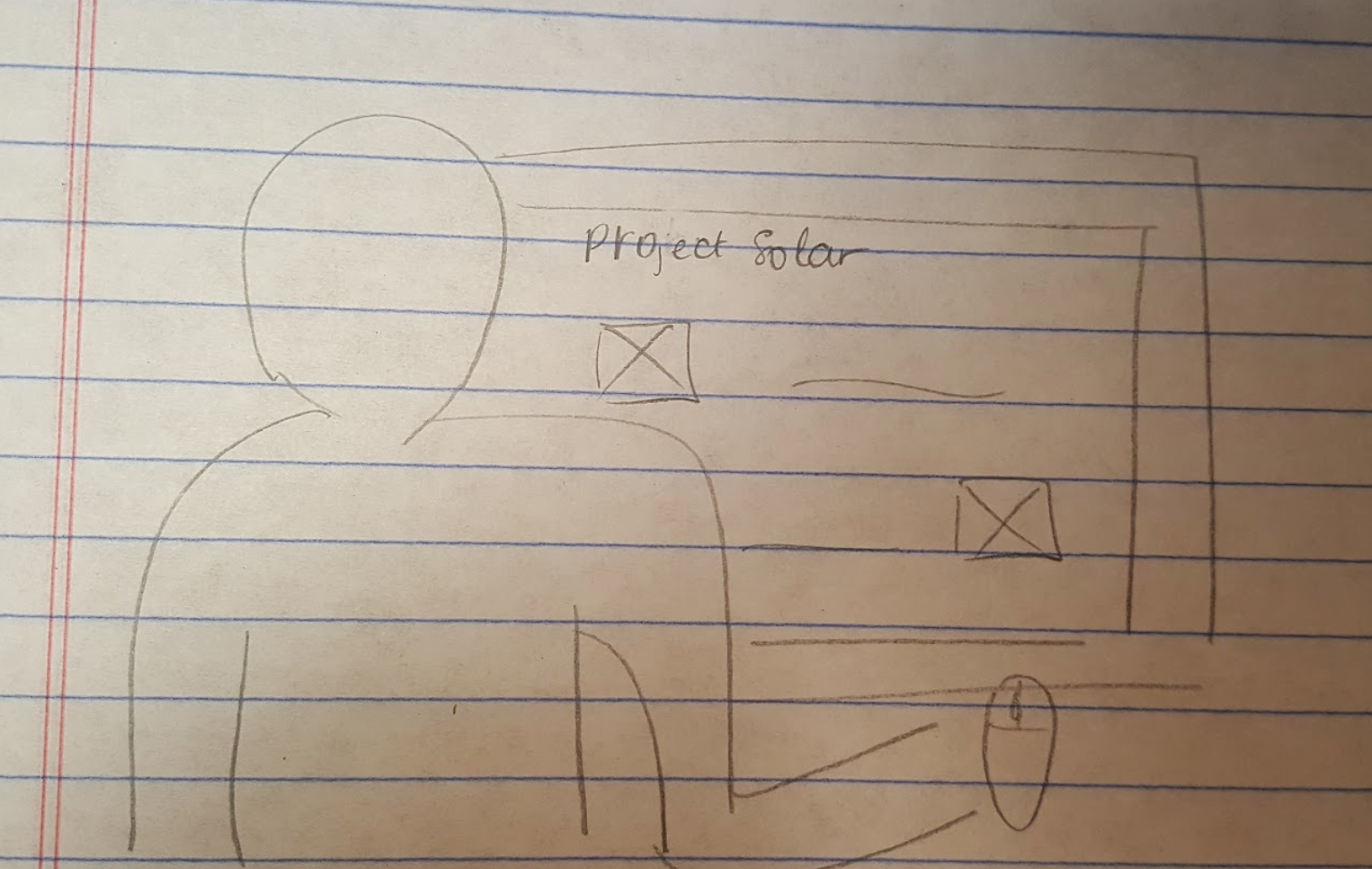
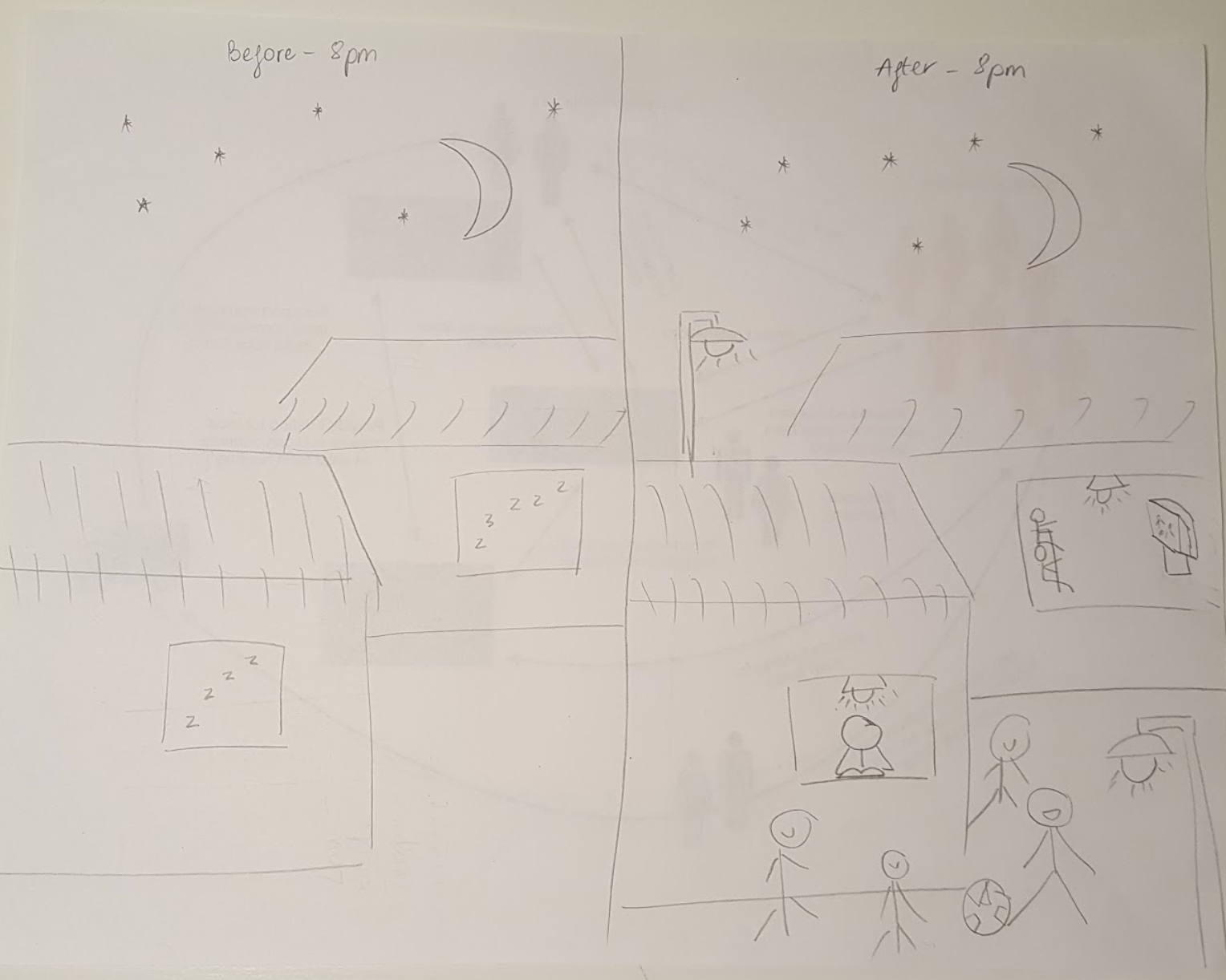

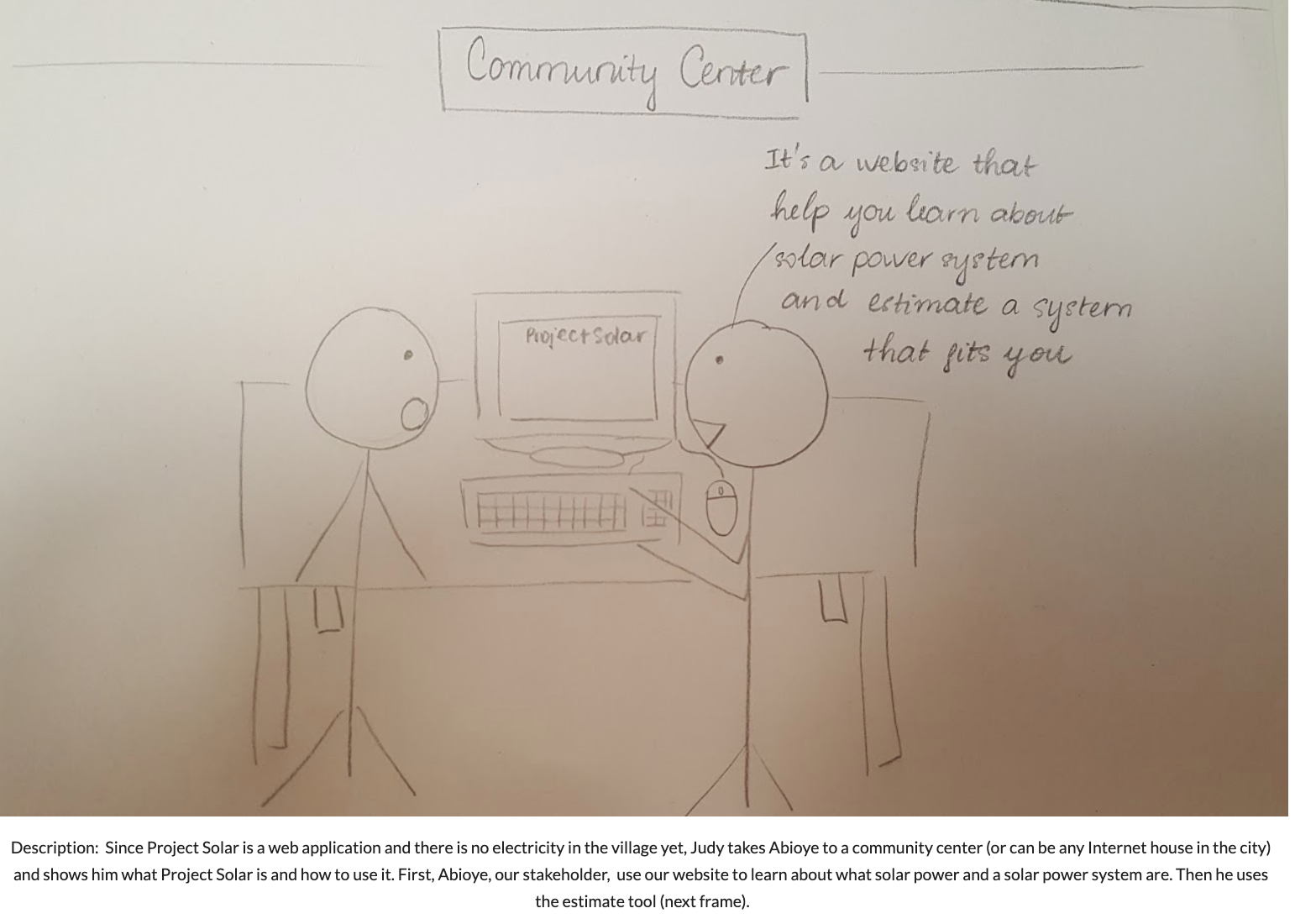
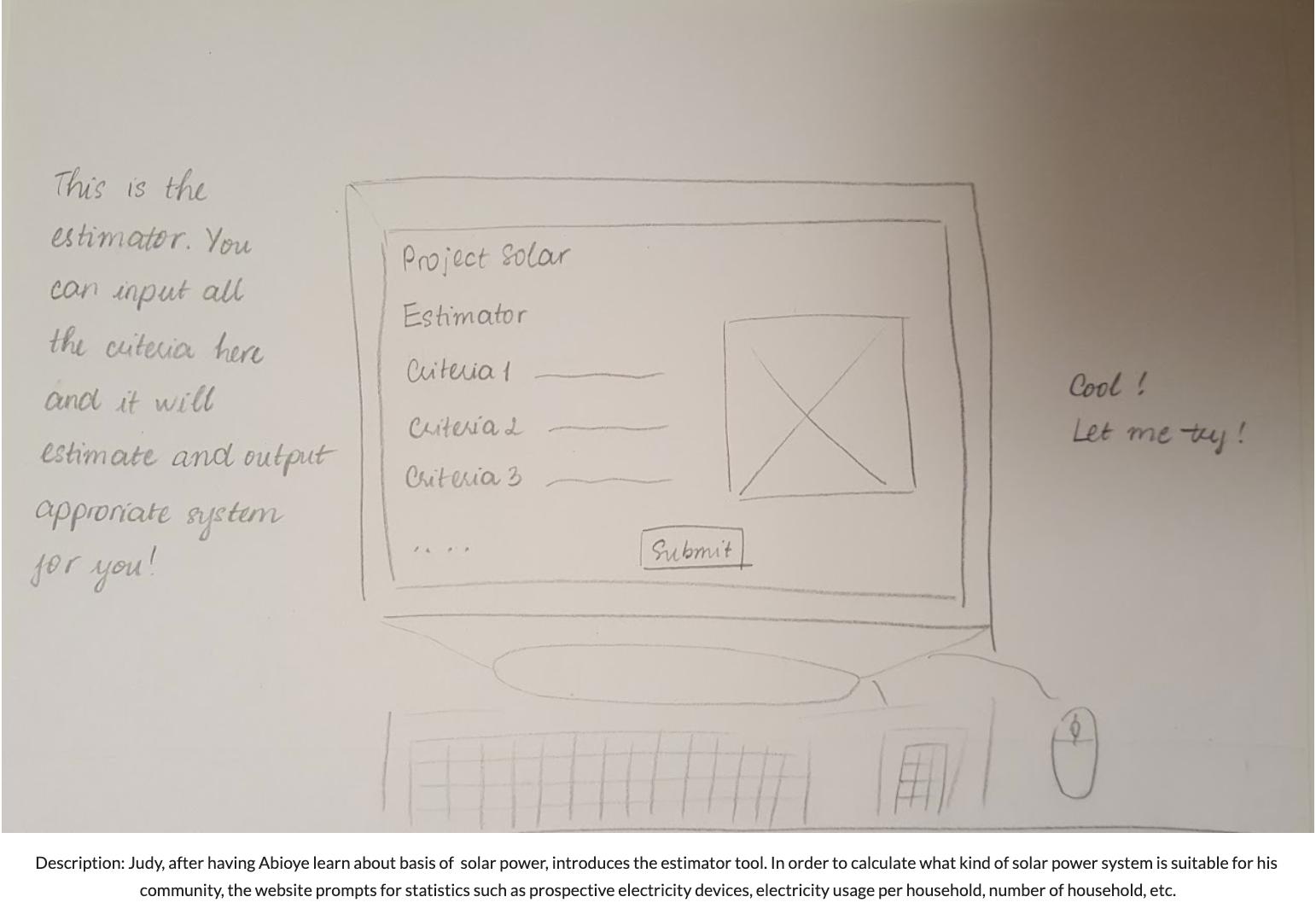
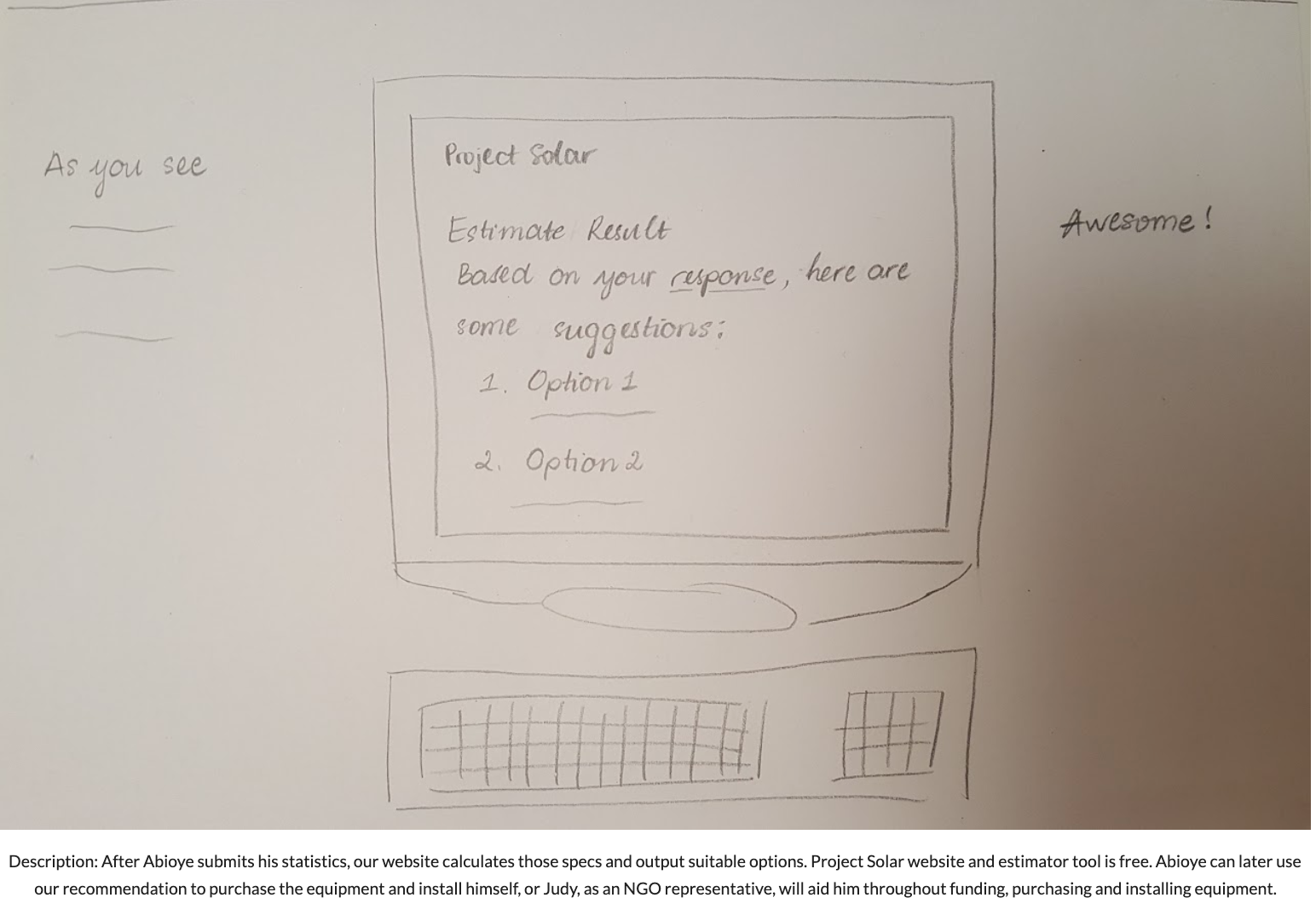
Mid-Fi and Mobile Prototyping
Based on first phase's evaluation, we built a mobile click-through prototype because of some of these reasons:
During our client feedback, our clients hinted at developing a mobile app version of our product because mobile app is more popular in developing countries than website. For example more people own a cell phone than a personal computer. In order to account for this factor, we built a prototype to for our website that is mobile-responsive.
We also built out some more features for our desktop services including the price estimator to get a feel for a baseline for how quickly people can work through the tasks.
We also built out some more features for our desktop services including the price estimator to get a feel for a baseline for how quickly people can work through the tasks.

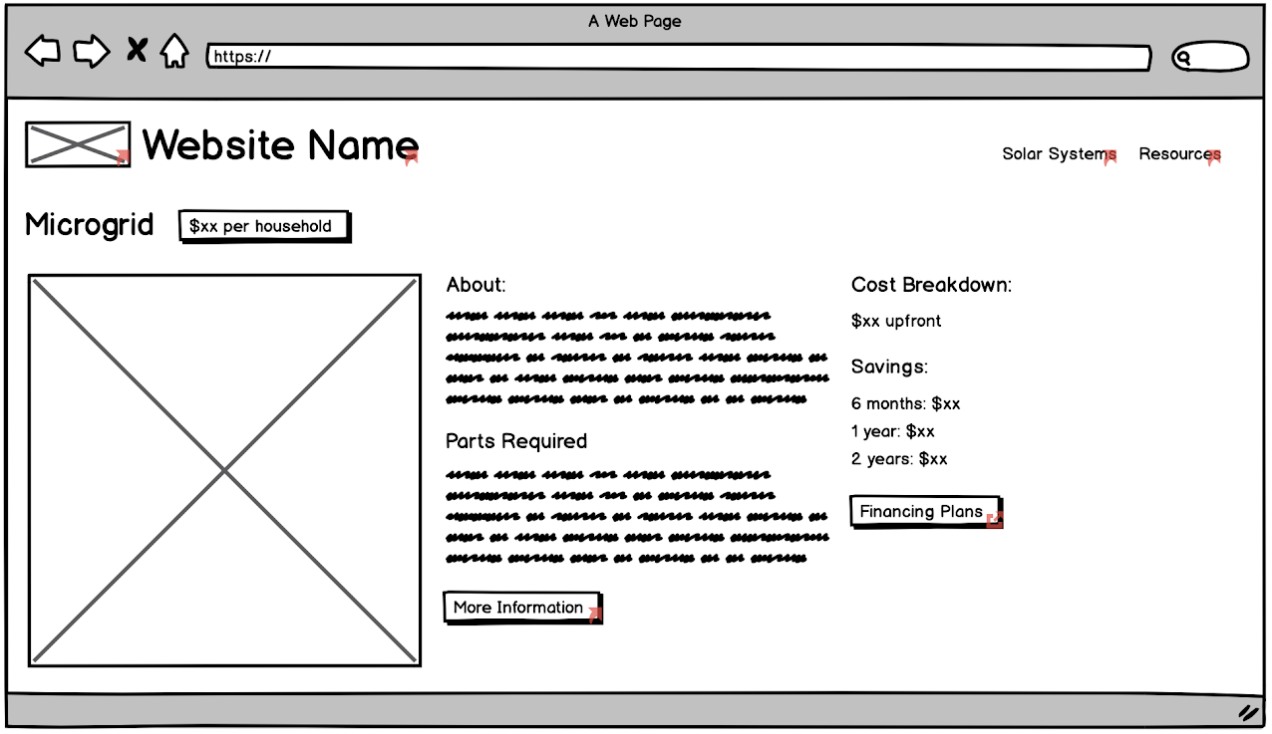
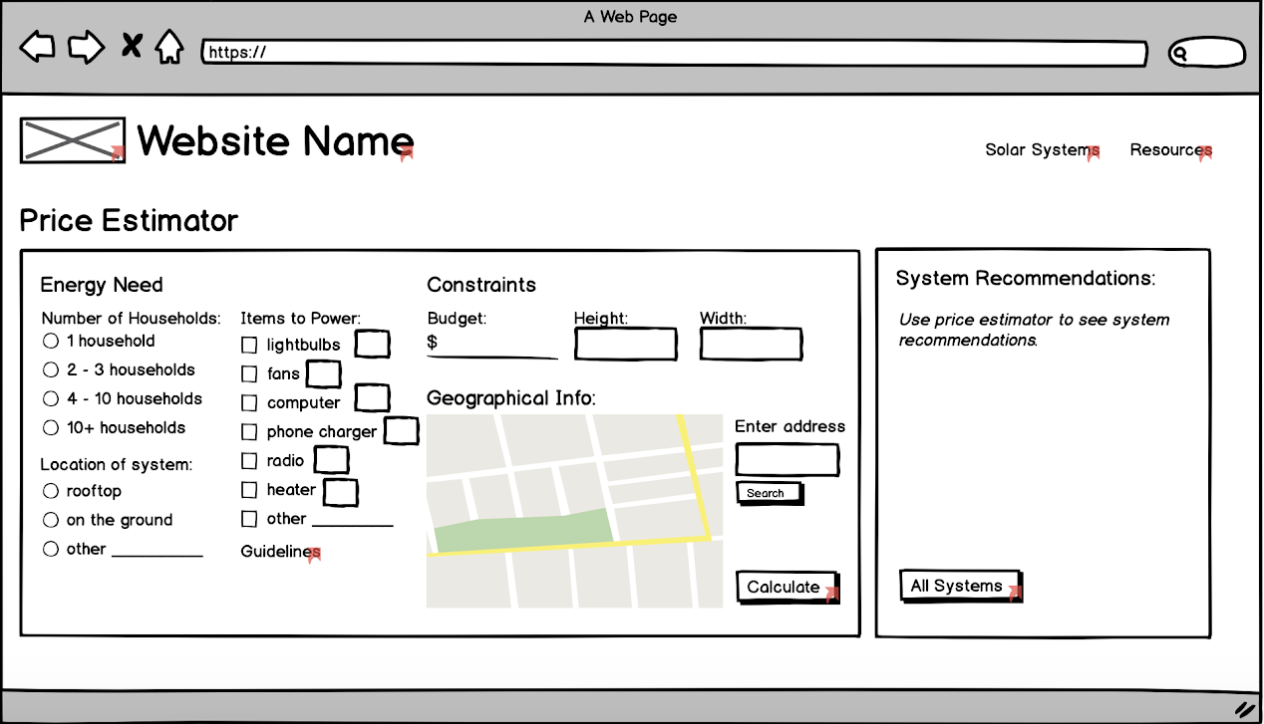
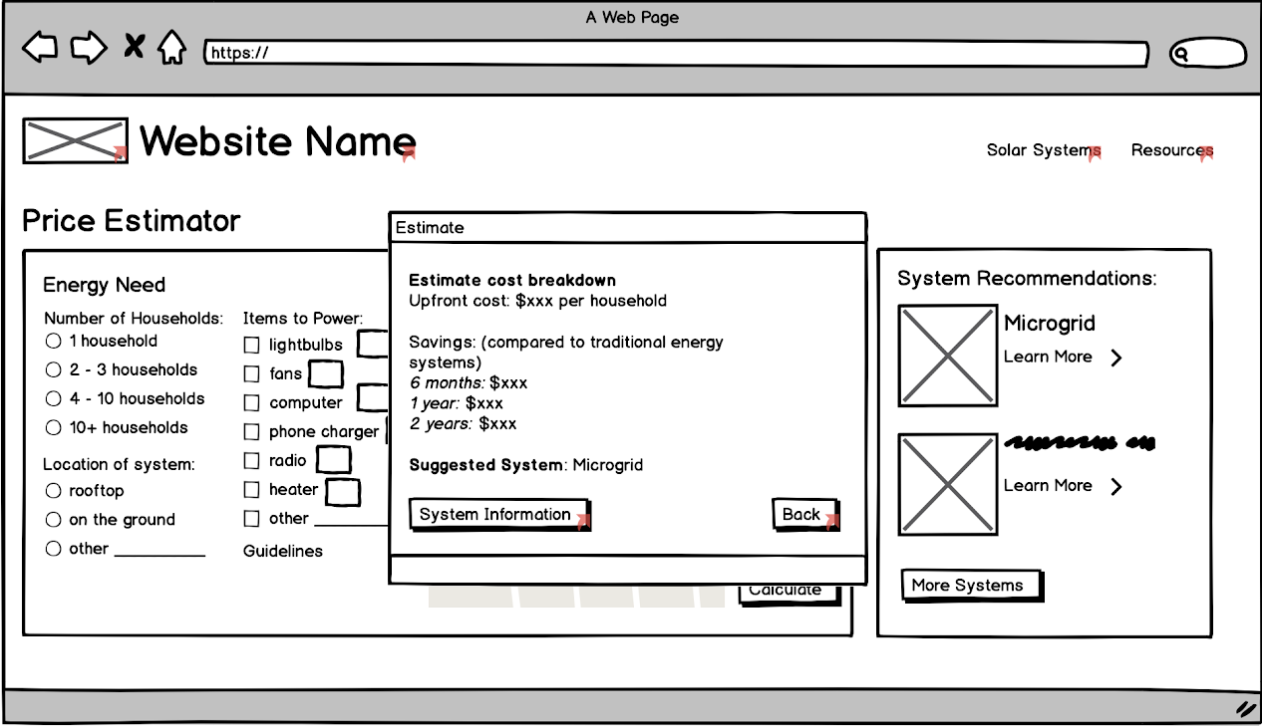
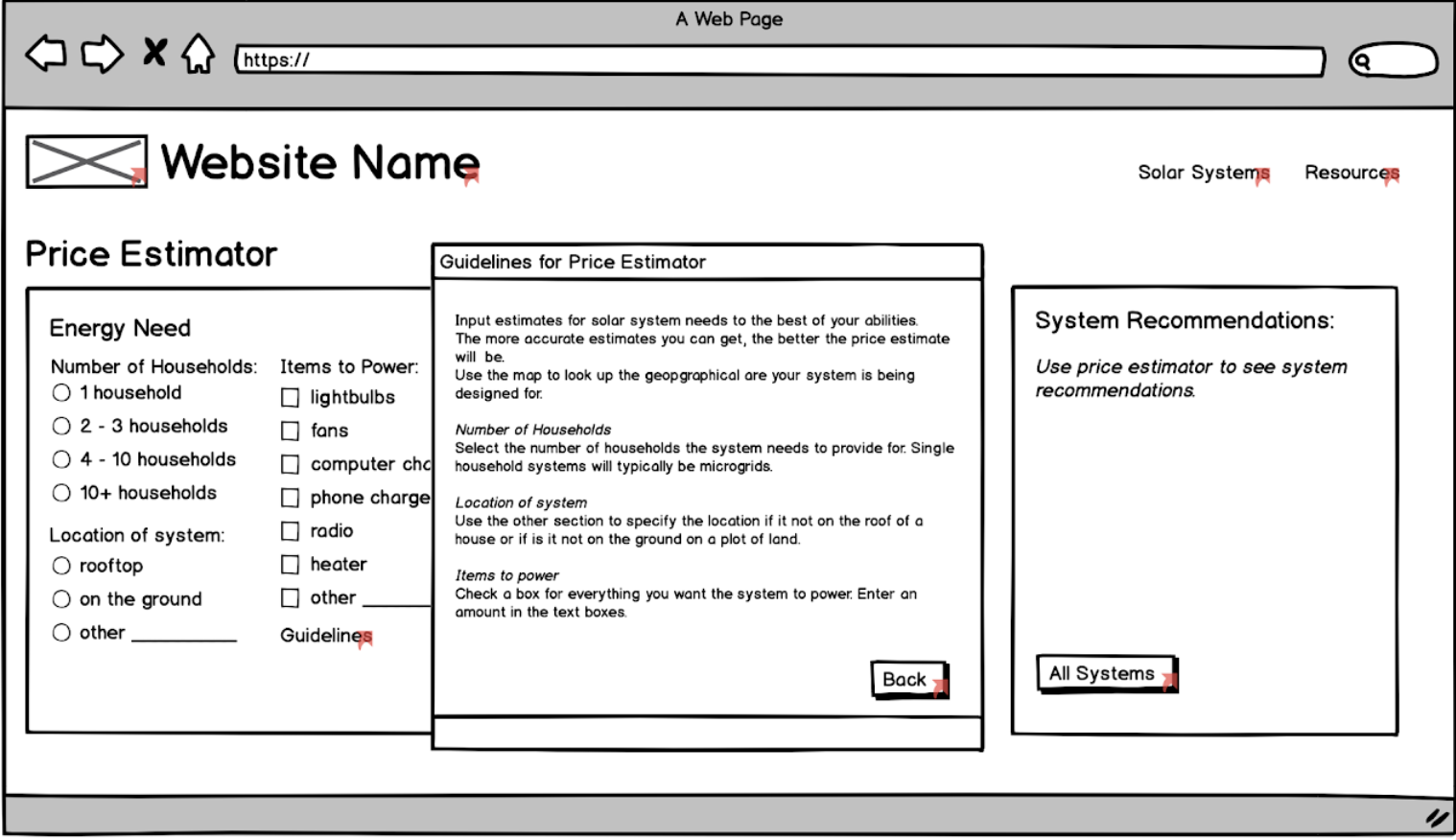
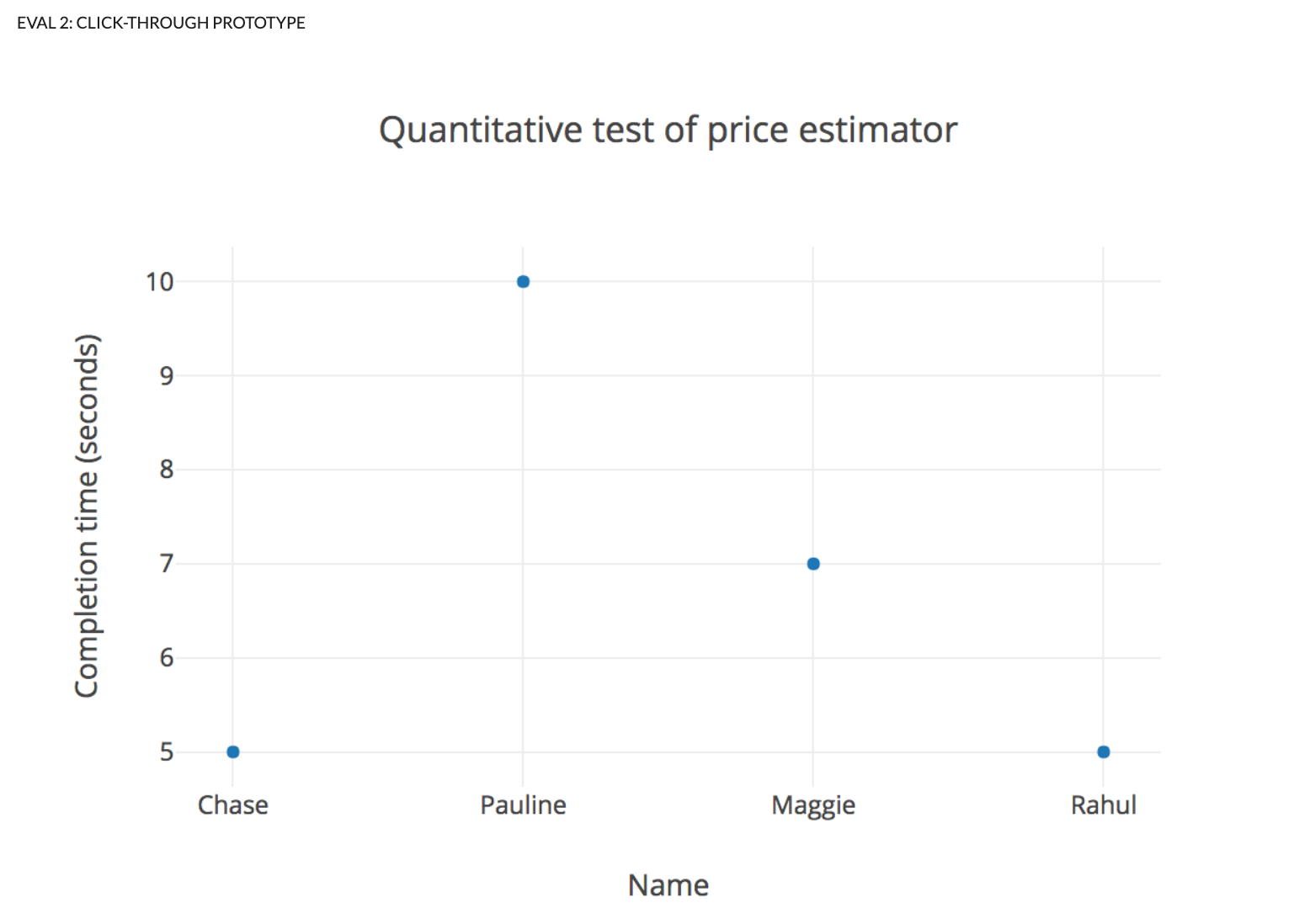
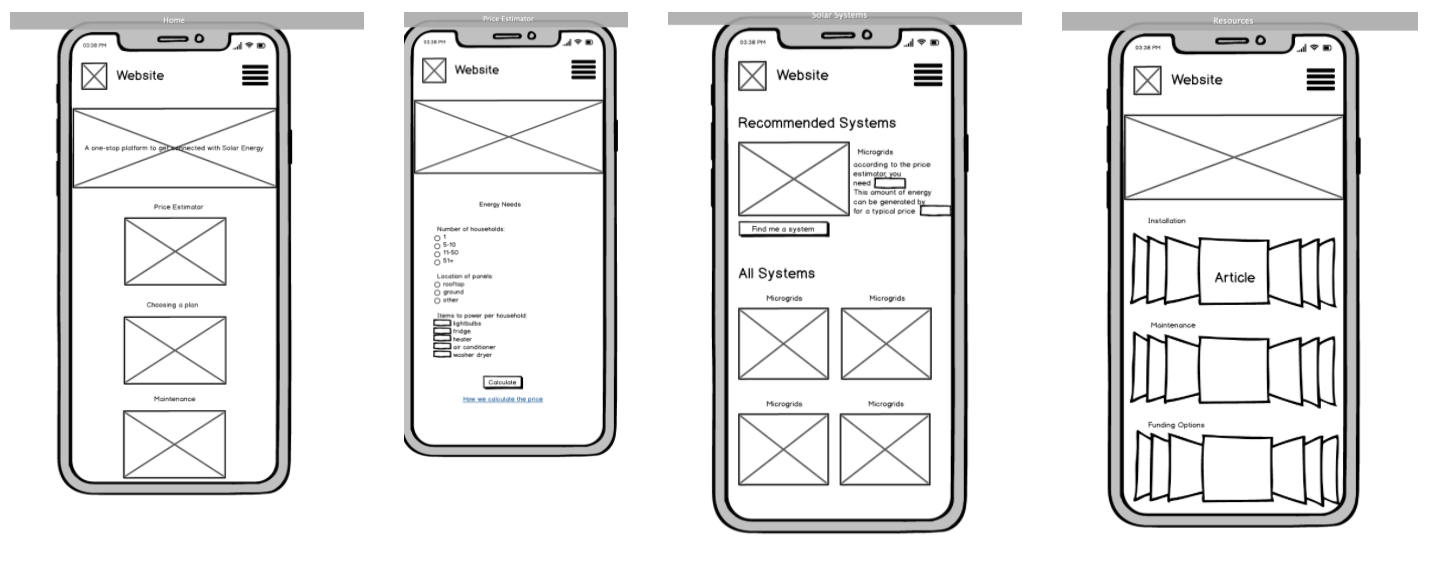

Results (High-Fi Prototype)
We chose to build the website using Wix based off our UX Target Table, which we developed while benchmark testing our prototypes. We decided not to hand-code a website due to the interest of time and lack of in-depth research on the actual target group. However, we wanted to get a functional prototype with our best guess assumptions based on research up and running to pitch.
https://kr8nq2.wixsite.com/projectsolar
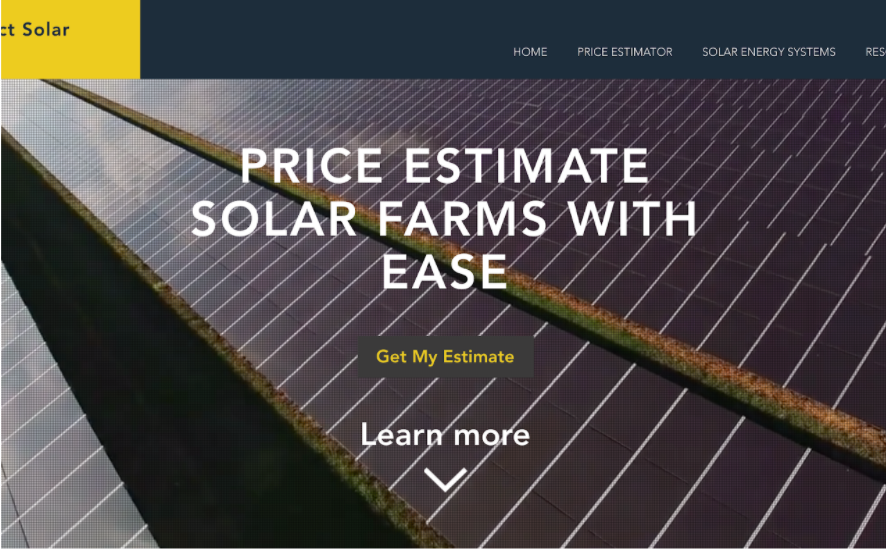
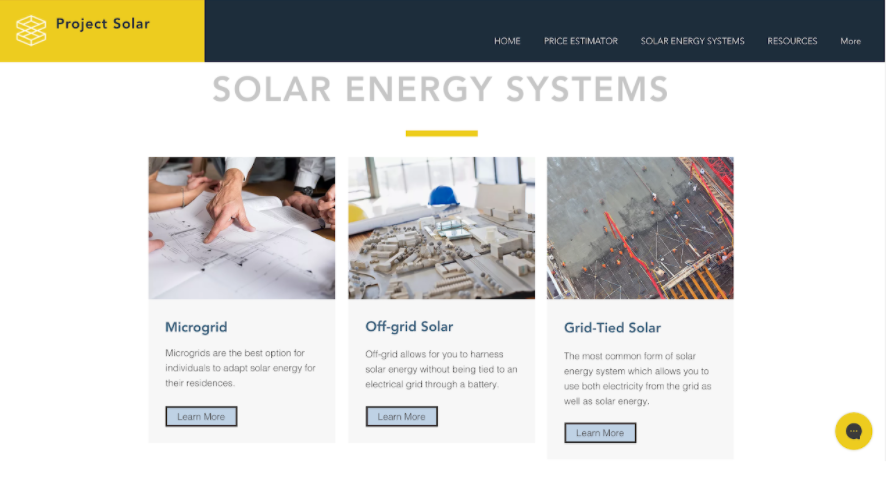

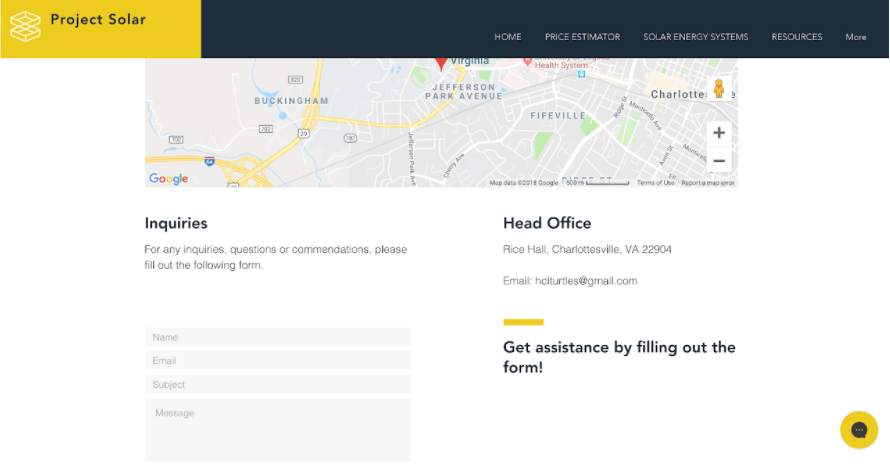
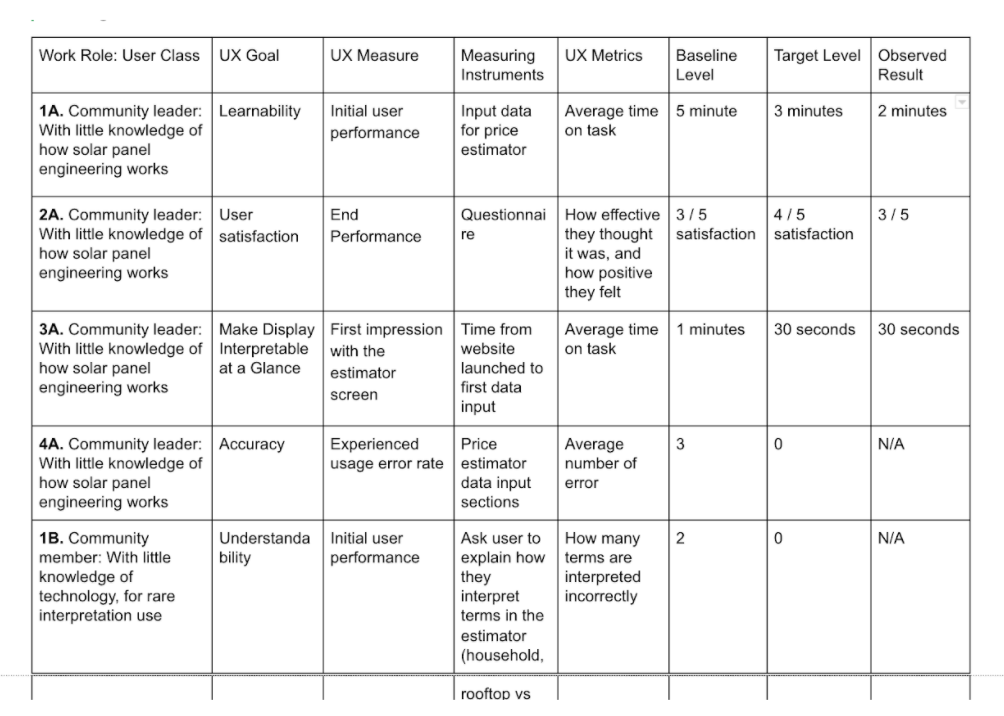
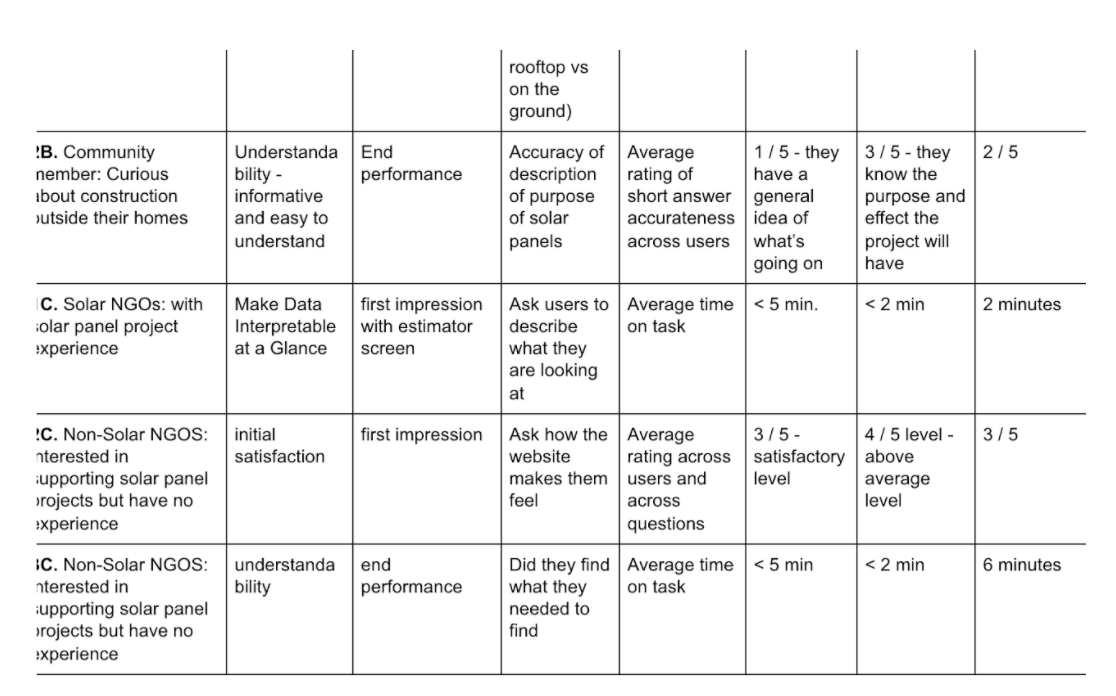
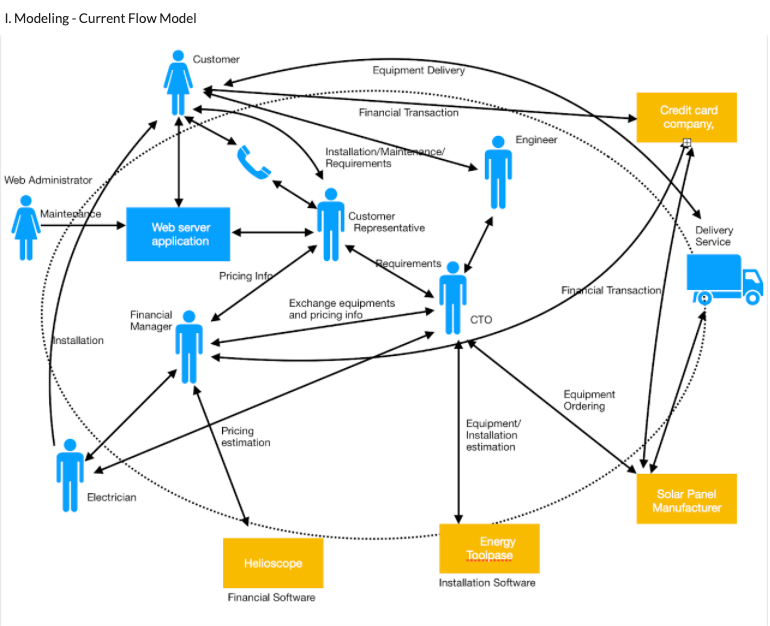
Current Flow
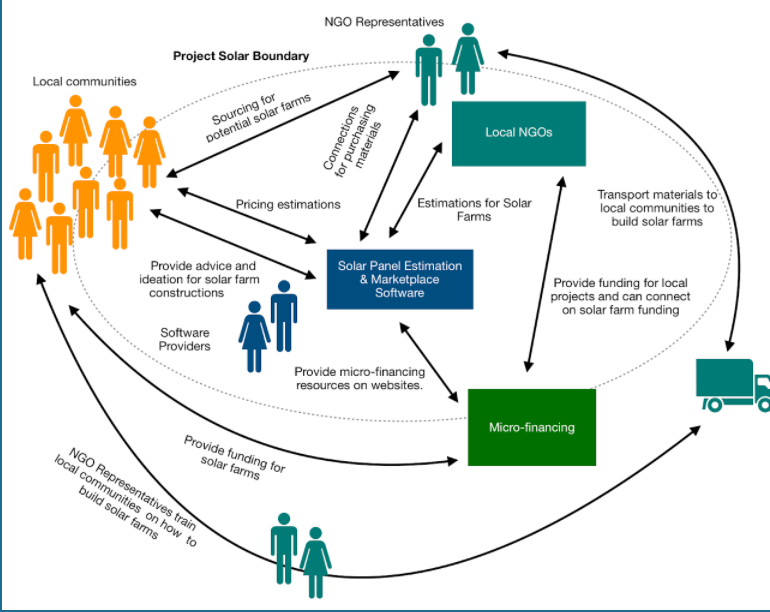
Future Flow
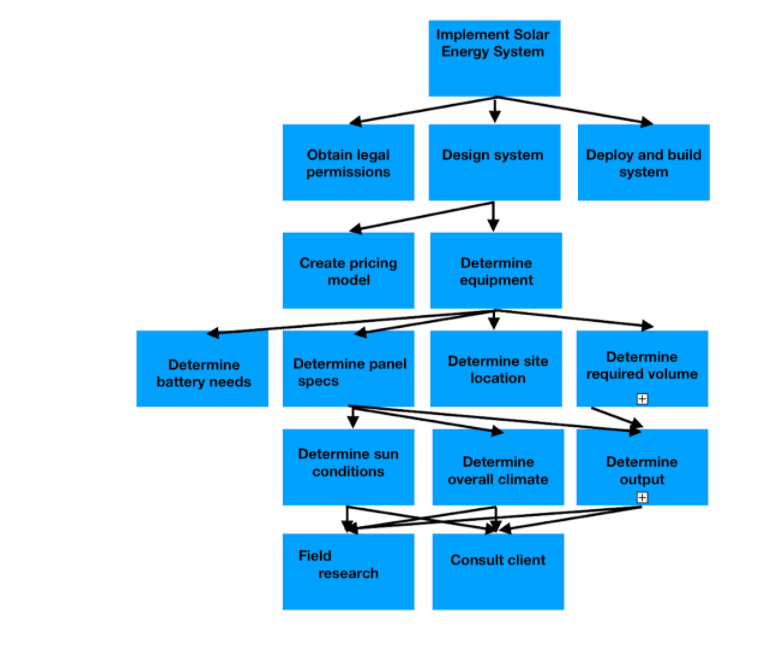
Current Flow
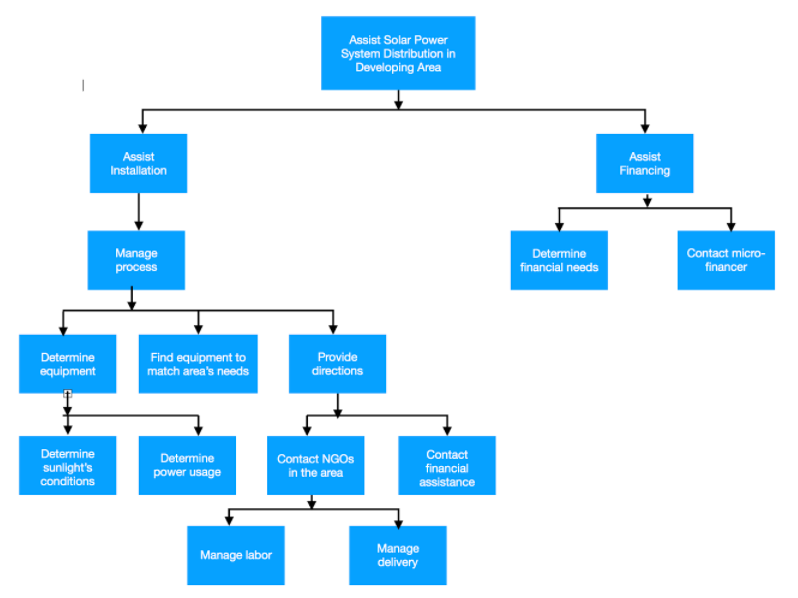
Future Flow
Reflection
The most valuable part about this project was learning how to draw different models and specify qualitative & quantitative data. Even though our solution will need much more validation from actual users and a larger sample size, the kinds of methods were used were valuable to gain insight into the bigger problem space.
